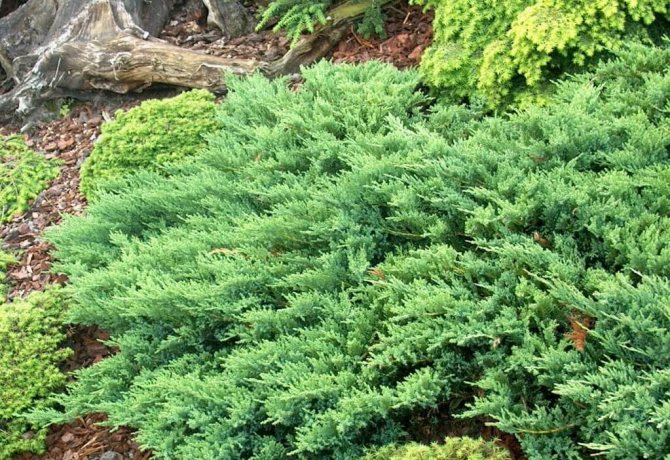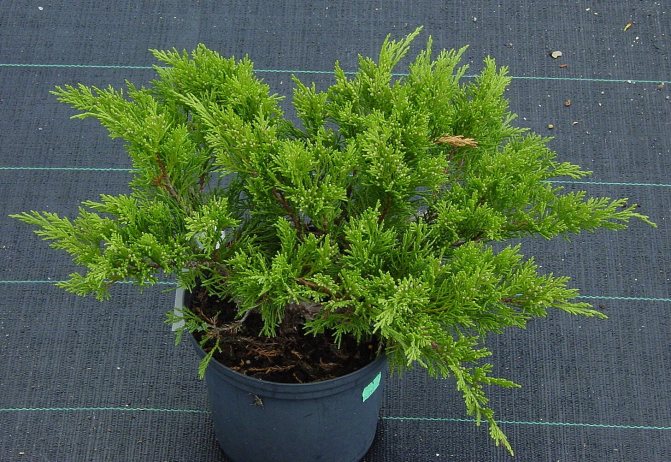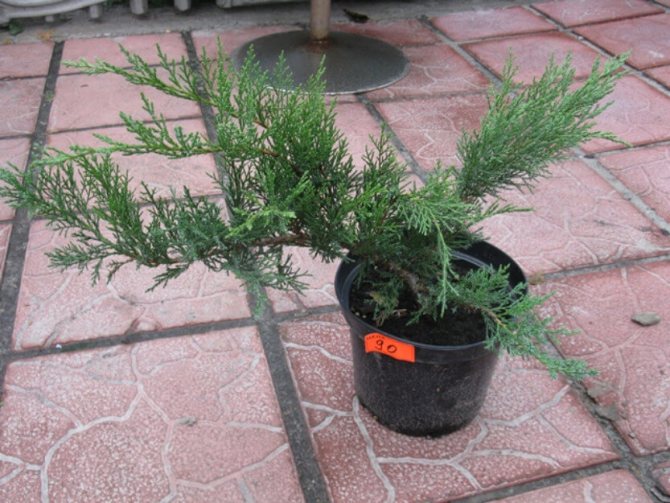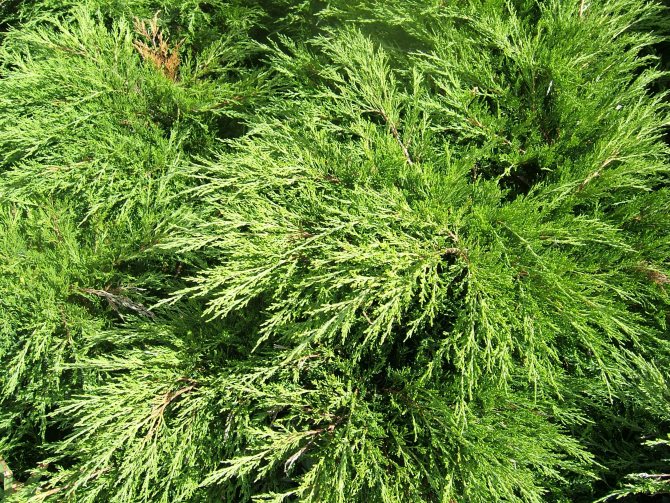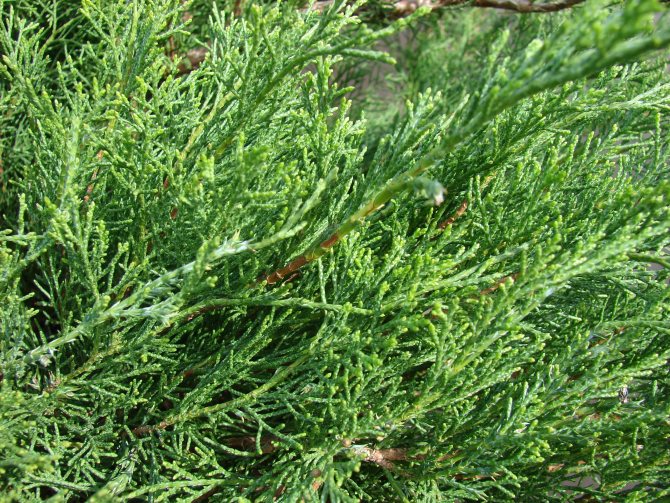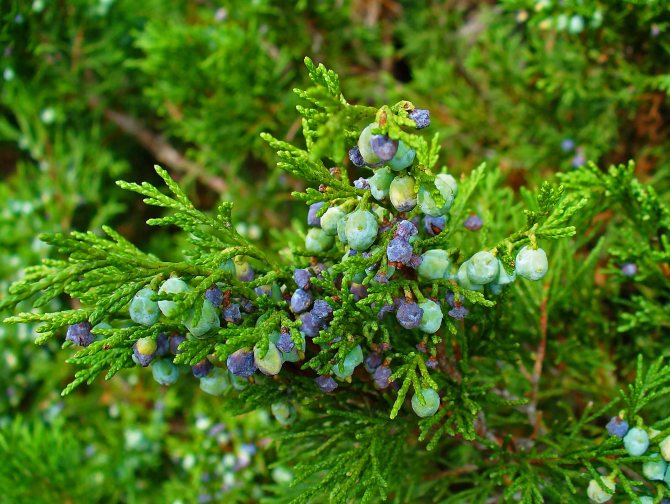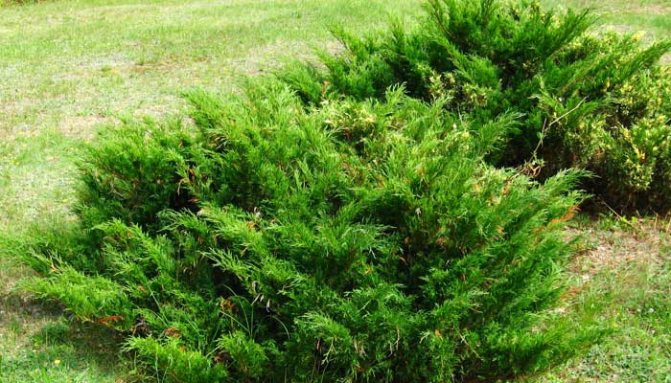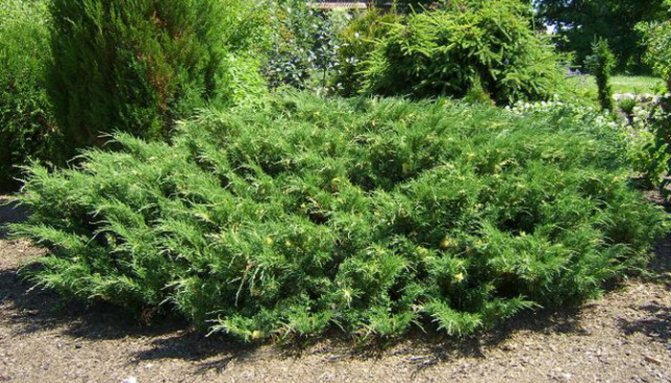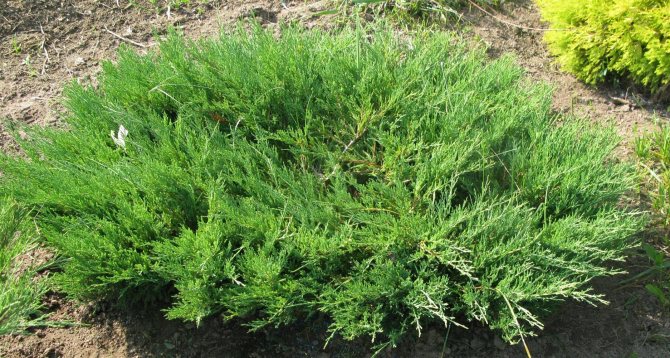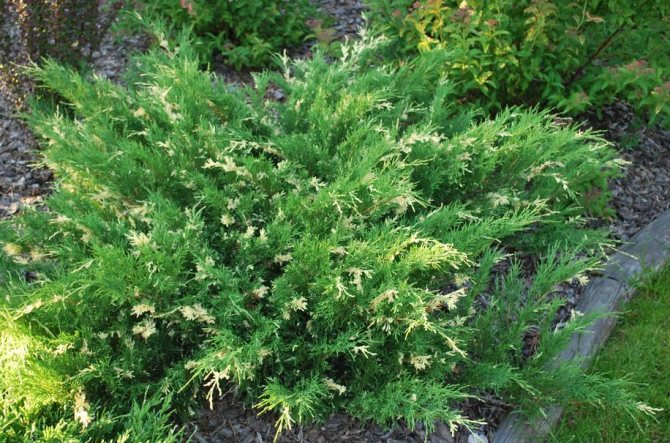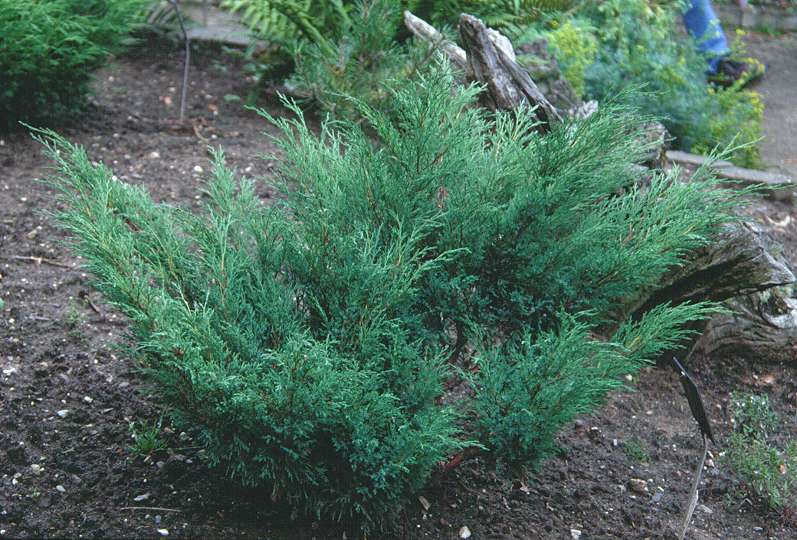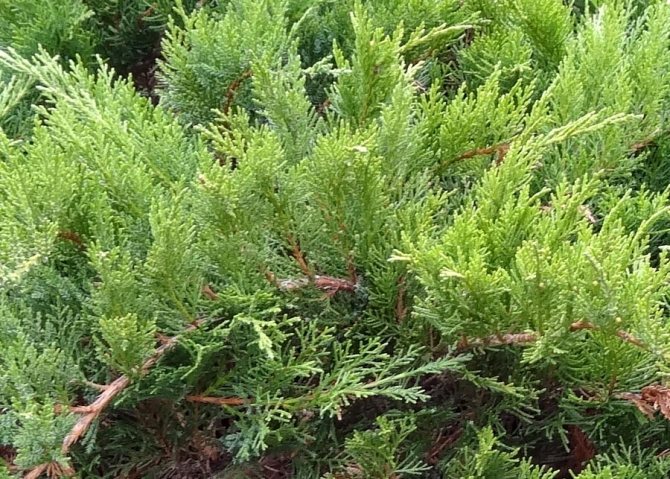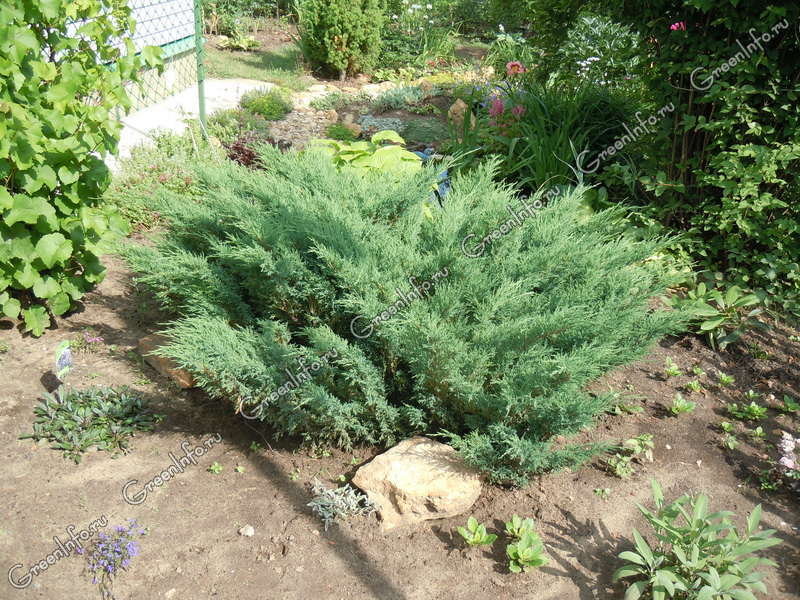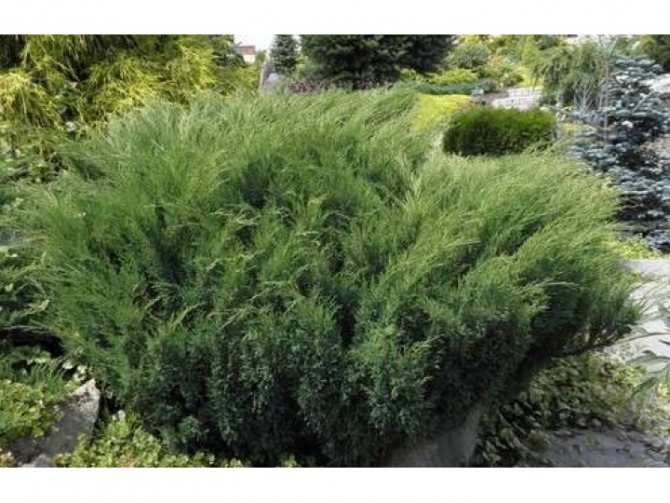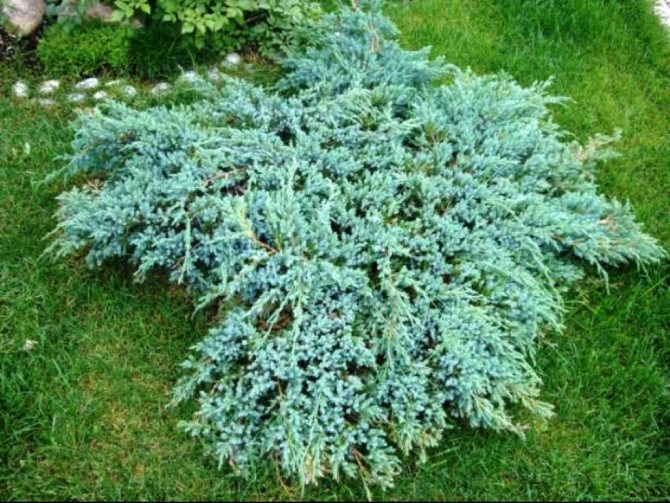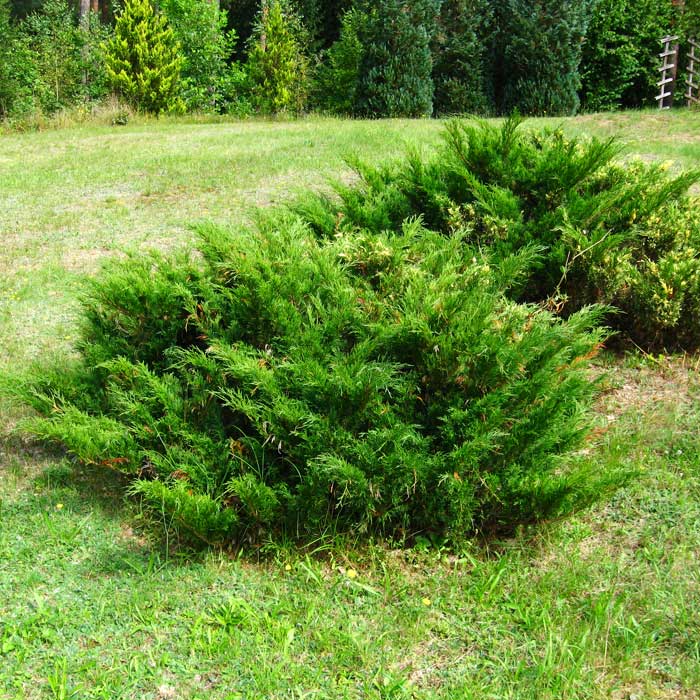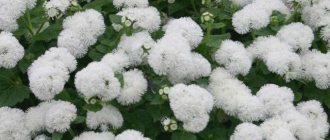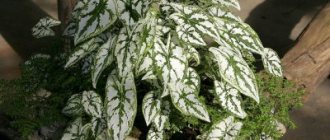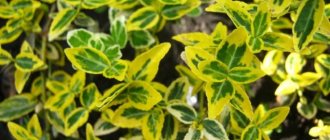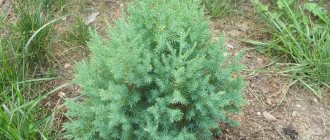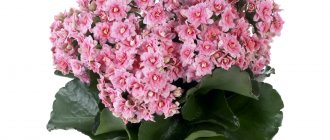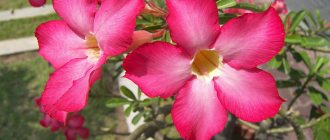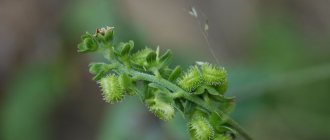The coniferous species of this species are distinguished by good survival in urban conditions, therefore they are widely used in landscape design. Juniper Cossack undemanding to the environment and care, hybrids have improved characteristics. It should be borne in mind that the plant is poisonous, therefore it is not recommended for landscaping playgrounds and places for walking with pets.
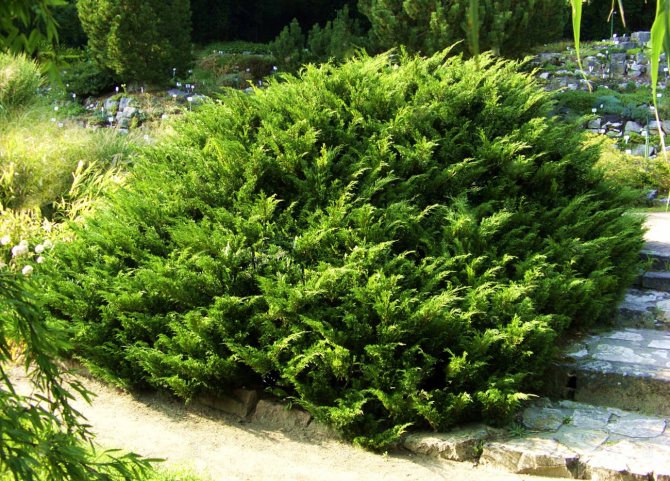
Thuja haircut
A haircut for a young growth of a thuja maintains its shape, makes the thuja more dense and even. But you need to start not with a haircut, but with cleaning the inside of the crown. Old needles accumulate and can become a source of fungal diseases, therefore, all accumulated needles must be removed - comb out and collect the crumbling
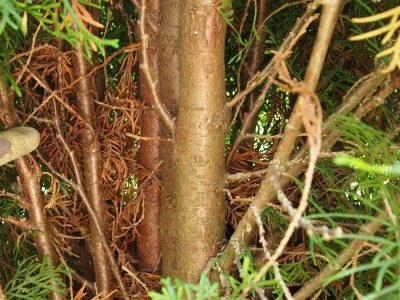

Old thuja needles need to be combed out
If the thuja is multi-stemmed, it is necessary to tie the trunks, cut out the dried branches. Experience shows that the best material for binding is women's elastic tights, they stretch and do not press on the trunks.
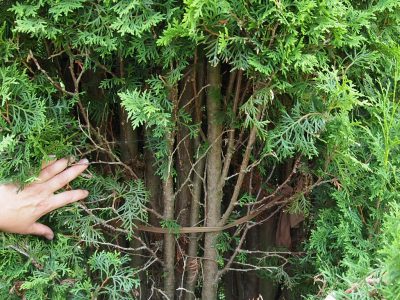

We tie the shoots of the thuja from the inside
This harness should be checked at least every 2 years to make sure the trunks are not overtightened. Tying multi-stemmed thuja saves the plant from winter breaks due to snow and icing. The trunks are tied along their entire height in several places.
Now that all the preparatory work has been completed, you can start cutting.
At the initial stage, as well as when cutting complex shapes, we use pruning shears and border scissors
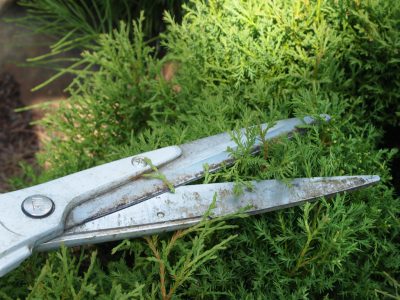

Cutting young growth of thuja with curb scissors
If it is not the first time that the thuja have formed and the crown is dense, you can use a brush cutter to cut large surfaces. The use of a hedge trimmer makes it easier to cut thuja hedges, giving the plants a columnar, pyramidal, spherical shape
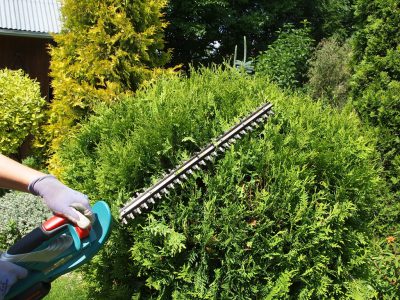

Cutting a spherical thuja with a brush cutter
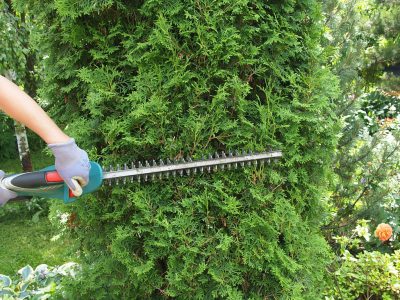

Cutting a columnar thuja with a brush cutter
Mature plants sometimes lose their shape. So, for example, thuja Ericoides was cut with a ball for a long time. But after winter every year the form did not recover for a long time, the shoots of this thuja are very soft. Therefore, I had to change the shape of the haircut and emphasize the collapsed ball. Now this haircut is called "living stones"


Thuja Ericoides before haircut
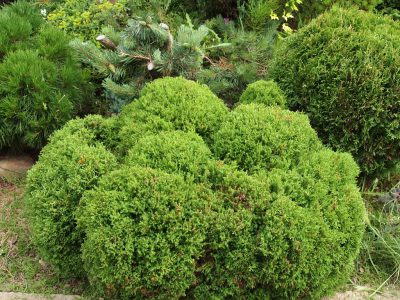

Thuja Ericoides haircut Live stones
To carry out a curly haircut, you need to outline the line of the proposed cuts with a cord, spray paint for flowers (the painted needles will be cut off) or something else, so as not to make a mistake and not accidentally cut it in the wrong place. Standing next to the plant, it is easy to get off the plan, so you need to step back and look at the result of the haircut "from the side".
After cutting with a brush cutter, hemp may remain, which spoil the view. We carefully remove them with pruning shears.
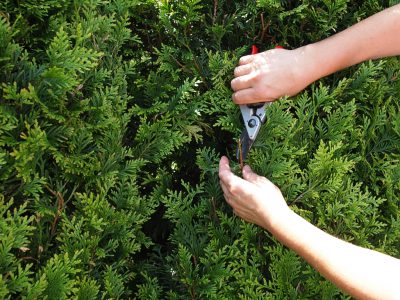

Removing stumps after cutting
Brief information about the species
- Needle color: blue, green, gray.
- Height: up to 1.5 m on average, most varieties are lower.
- Crown diameter: depends on the variety, maximum - 8 m.
- In which regions is it growing:
- Landing features: light-loving culture, resistant to air pollution. Poorly tolerates salty soils. Cannot be planted next to roses and plums.
- Immunity: the strongest among junipers. The main diseases are fusarium, brown shute, biotorella cancer. Mesh rust carrier.
- Life span: over 20 years.
Pruning Cossack juniper for crown formation
The procedure for pruning Cossack juniper must be carried out very, very carefully - and at the same time remove only painful, damaged or dried branches using special equipment. Not all of the varieties presented require the formation of the crown of the bushes - mostly only dense and creeping.
It is recommended to carry out shaping pruning no more than twice a year, when the air temperature is not less than plus 4 degrees - in spring and autumn. Gardeners and landscape designers try to resort to the pruning procedure as rarely as possible - if it is necessary to direct the growth of branches in a specific direction, to give a decorative effect to a bush or to limit the size of a juniper. There is a rule - you cannot cut off more than 20 new growth (which, by the way, is about ten centimeters). If, during the procedure, wounds have formed on the bark, they are usually not covered up. But if they are deep or wide, we advise you to treat them with resin.
Correctly carried out pruning of Cossack juniper to form the crown will allow you to create the most incredible green sculptures for the garden.
Care features
It is important to familiarize yourself not only with the correct planting, but also with the peculiarities of caring for the Cossack juniper, so that the plant really pleases with a spectacular appearance. In principle, the juniper is considered an unpretentious plant, so care is easy, but still it requires regularity.
It is very important to ensure that the plant is well watered, especially in the summer when there are dry days outside. Additionally, the crown can be sprayed. This simple procedure will have a beneficial effect on the appearance of the plant. And you need to spray in the evening. Enough once a week. You can judge that a plant needs watering by the dry soil under it, and spraying - by the dry bark.
The plant does not need fertilization and feeding. The exception is young shoots. Mineral complex fertilizers will be useful for them, but they need to be diluted in a weak concentration. You can use a nitroammophos, which is made on the basis that 30 grams of funds are needed per square meter of the root zone. It is advisable to fertilize young plants in the spring when the snow melts.
Advice! Avoid nitrogen fertilizers. For conifers, they are not the best option, as they can lead to deformation of the decorative crown.
Another essential element of proper juniper care is timely pruning. It should begin when the culture reaches the age of two years. It is recommended to use a garden pruner, with which all damaged and dry branches are cut. Further, pruning is carried out twice a year: in spring (in April) and in autumn (in September). Pay attention to the temperature outside the window: it should be above 4 degrees Celsius.


The Cossack juniper, the most popular varieties of which are "tamariscifolia", "blue danub", "mass", "erecta", "rockery jam", "variegata", is a bright and effective decoration of the personal plot. Its landing is extremely simple, and subsequent care does not require much work. It is enough to water and cut the plant in a timely manner, you can do without feeding. If everything is done correctly, then a beautiful culture will delight you as one of the elements of thoughtful landscape design on a personal plot.
Additionally, you can watch a video that tells about the features of planting and caring for a crop so that it grows without problems and is pleasing to the eye.
Juniper (heather, juniper) is a coniferous shrub that belongs to the genus of evergreens, the cypress family. An ancient plant.Its modern Russian name has the Proto-Slavic root "juniper" (translated - knit or weave). In the wild, the distribution area is mainly the northern hemisphere. Wherever there are forest-steppe: western and eastern Siberia, the European part of Russia, other European countries, North America.
Reproduction, planting and transplanting of Cossack juniper
When planting Cossack juniper, it is recommended to place the bushes at a distance of about 120 centimeters from each other. They can be planted as a cover plant, as some varieties may be very small in stature. But taller species will be excellent protection for other flowers and plants in your area.
It can be planted on any soil - it will grow well everywhere if it is drained. Preferences - neutral or slightly alkaline and limestone soils. It just blooms in a shaded area on poor soil. The plant easily tolerates drought, and tolerates heat well, although they prefer to grow in the shade. Loves moisture, so planting should be carried out in places where there are suitable conditions for this.
Juniper varieties
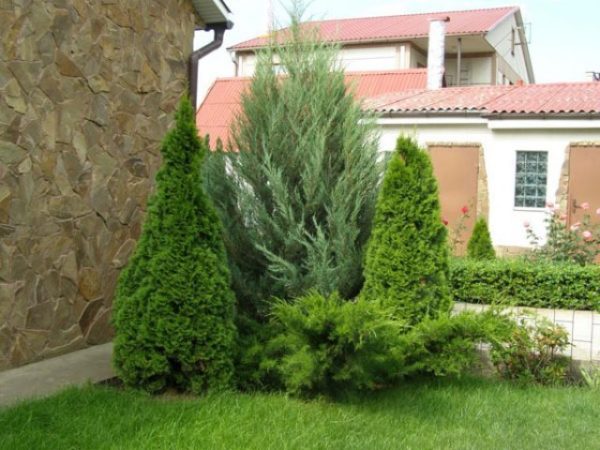

In nature, there are many types of this shrub. Let's consider the main ones.
Tall varieties
- Virginia. It grows up to 25-30 m. Small diameter - 1.3-1.5 meters, with short green needles. The cones are blue.
- Ordinary. Great for hedges. Height up to 3 meters, strong pine needles smell. The branches do not grow quite symmetrically, outweighing on one side.
- Chinese. Grows in the shape of a cone, length 20-25 meters. It has long and thin needles of bright green color. Fruits are dark brown. It tolerates frost well.
- Hard seed is a rare representative. Listed in the Red Book. Moisture resistant, not subject to decay. 5-10 m height. The needles are 3 mm green with a blue tint.
- Solid. Owner of the most lush crown. The color is emerald with a yellowish tinge. In nature, it grows in rocky terrain.
Formative Juniper Pruning
The main feature of junipers is their rapid growth, therefore, the trimming procedure is primarily aimed at curbing the active growth of the bushes and giving them an attractive appearance. Agree, shaggy, unkempt conifers do not look very aesthetically pleasing.
Creeping juniper varieties (Cossack, horizontal, Chinese, medium) are sheared as follows - several well-located stems are selected, all excess branches are cut out, leaving only the upper shoots. In subsequent years, only young growth is cut, but no more than 20% per season.
Note! Pruning of Cossack juniper should be carried out with the utmost care, since its shoots contain a poisonous essential oil (sabinol). Of course, it will not cause fatal poisoning, but the scratches from the needles on the hands will itch, hurt and heal for a long time.
Pruning of common juniper involves superficial cutting of new growth, due to which the density of the crown increases and the bush does not fall under the weight of snow drifts in winter. Live juniper hedges are cut several times over the summer, trimming the shoots that break out of the coniferous "wall".
In general, the juniper tolerates a haircut well, but in order to speed up the recovery process, at the end of molding, it is recommended to spray the bushes with a solution of any growth stimulant. The preparations "Emistim" and "Epin-extra" are perfect. Contrary to popular belief, there is no need to gloss over the cuts after a haircut.
Planting junipers in autumn
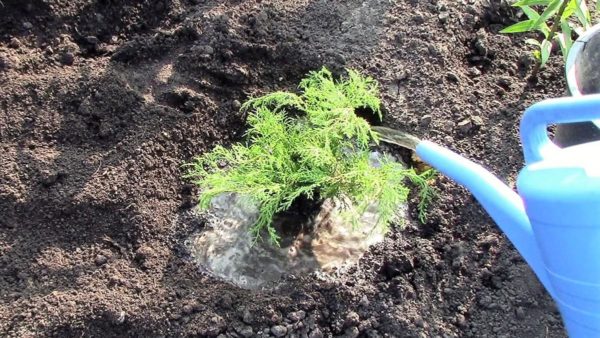

It is best to plant the plant in spring or autumn, observing the technology. Determine the acidity of the soil. This can be done using a pH meter device, or by the presence of weeds of certain varieties.
strongly acidic
Horsetail, sorrel, plantain, ponytail
Above 7 alkaline
| pH value | Weeds | Juniper varieties suitable for soil with this pH |
| Chinese | ||
| Other | ||
| Nettle | Other | |
| White sandman, poppy | Common, Cossack, Central Asian. |
Following the step-by-step instructions will help to plant the juniper correctly:
- fertilize;
- watering;
- prepare holes 15 cm deep;
- small pebbles or broken brick are poured into the bottom of the hole;
- a mixture of sand, clay soil, peat is poured and left for 14 days;
- position the seedling, trying not to injure it, and the rod should be 5 cm above the soil level;
- covered with earth.
Landing technology
Due to its decorativeness, juniper is an excellent solution for a young garden. A group of several seedlings is able to immediately fill the voids and create a nice composition.
For planting light-loving varieties, an open and high-quality illuminated area with sandy loam or loamy soil is selected, which is well saturated and moistened.
A living, formed hedge of silver-blue juniper will become a bright accent of landscape design. If the soil is sufficiently clayey and heavy, a mixture of peat, garden and coniferous soil, as well as sand is added to it. Before planting, a pit is necessarily drained, broken brick or stone is poured into it.
Plants of all varieties are planted very quickly so that the root system does not have time to dry out, but carefully enough so as not to damage the young shoots and the earthy clod. Then it is watered abundantly and hides from the direct rays of the sun. The density of placement depends on the landscape composition - whether it will be a hedge, group or specimen planting. After the plant takes root in the first spring, the juniper is pruned. It must be done carefully so as not to damage the leading branches, as this will affect the beauty and growth in the future.
Planting material
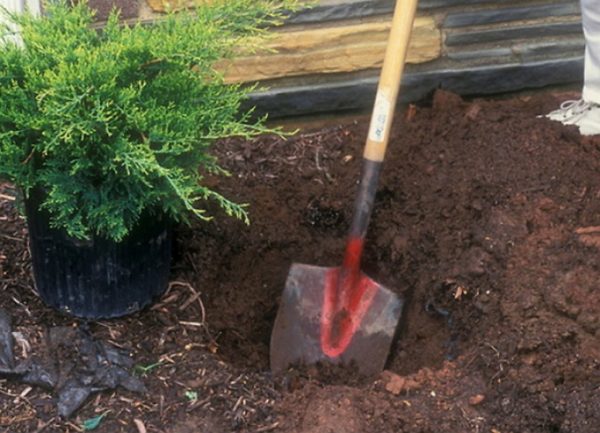

Seedlings are chosen in late summer - early autumn. This is the most favorable time for planting junipers. There should be no frost and, conversely, no heat. It is best to purchase them in a specialized network of shops for gardeners and gardeners. Buy 3 year old plants, researching for diseases.
Warning signs during the purchase: withered twigs, yellowish tint of needles (unless it is provided for this variety, for example, "Golden Carpet"), damage, a lump of soil crumbles and does not keep its shape, there are fragments of the root.
- with elastic fresh needles;
- with a large earthen lump that fills the entire package or container;
- the root system is not damaged;
- the color of the needles corresponds to the variety;
- no pieces of root or broken off twigs.
Larch cutting
Both European and Japanese larch cut well. This year's increments are easily shortened with curb shears. It is easy for young larch trees to give the necessary shape and then maintain it with an annual haircut.
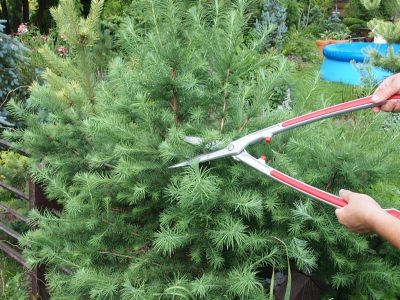

Cutting Japanese larch
In recent years, larch trees have been exposed to fungal diseases, so their growth has been greatly inhibited. Intensive clipping is also not conducive to tree health. It is better to abandon the idea of restraining the growth of species of larches by cutting, now there are many undersized varieties.
Testimonials
Landscape designers speak positively about the Cossack variety.
Nurseries set low prices for seedlings, but the decorative properties of the plant are very high: it can be planted throughout the site in a variety of compositions.
Juniper is used as a ground cover crop to decorate hills, along with a variety of flowers as a background.
When planting, it is important to understand that it must be trimmed regularly: it grows extremely quickly and forms dense thickets.
Spruce haircut
Norway spruce tolerates a haircut perfectly.By cutting, you can limit the height of the plant, for example, prevent it from growing above a meter. To do this, every year, 1 or 2 times per season, we cut the young growth, removing up to 2/3 of its length. The cut must be carried out on one of the buds laid on the young shoot
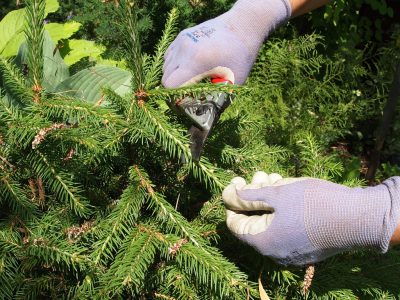

Cutting young growth of common spruce on the kidney
If you leave the stump over the bud, it will gradually dry out. When the spruce is dense, with a lot of shoots, it will be possible to cut it with a brush cutter, without paying attention to the buds.
Colorado spruce also responds well to haircuts. A prickly haircut makes a species spruce slender and dense
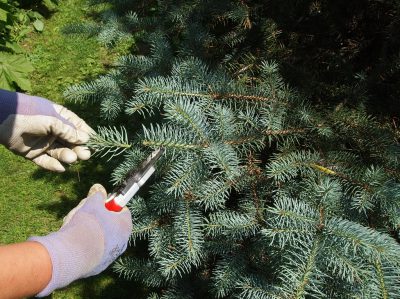

Cutting young growth spruce barbed on the kidney
Colorado spruce Glauca Globosa grows quickly, which also forces you to resort to a haircut
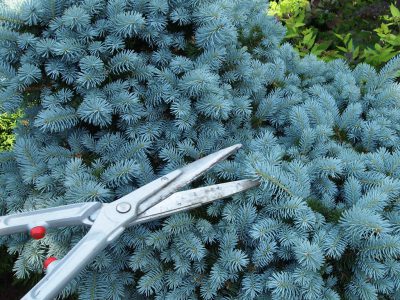

Grooming spruce prickly Glauca Globosa
With a haircut, we maintain the already existing shape of the plant by clearing the spruce stem
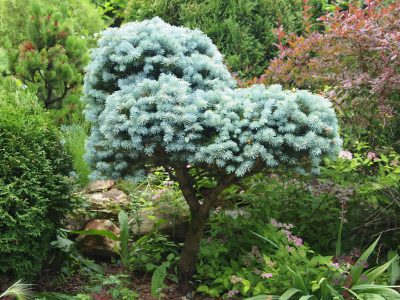

We clean the spruce stem from the lower branches
Use in landscape design
Cossack juniper has a pleasant crown color and small size, due to which it is used by landscape designers everywhere.
- It is planted as a tapeworm.
- They are used to decorate lawns, slopes, rocky hills and flower beds.
- A hedge is formed from it.
- It is used to create complex compositions and shade other plants in group plantings.
Landscape designers note that this juniper goes well with brightly colored perennials.
At the same time, against the background of lush vegetation and with massive flowers, it does not look attractive. The situation does not change during the flowering period of the latter.
Large varieties are planted when creating a landscape style, which is also called English.
In this case, it is important to choose a shrub with a calm tone of needles and the correct crown. When composing a composition, this juniper is placed in the background, without making a special emphasis on it.
For discreet Japanese gardens, strict varieties are used that create a contrast for bright and unusual plants.
When decorating, it is advised to plant an ephedra not far from ordinary heather of various shades, or use Sabina to decorate rocky hills.
Cossack juniper is a bad neighbor for plums and rosaceae, as it is a carrier of fungi that cause net rust.
In addition to the traditional planting in open ground, a topiary is formed from it. The application of the form is different: from decorating attics and gazebos to growing at home.
It is necessary to cut them to form a crown with gloves.
Topiary, like nivaki (bonsai), is an attractive piece, but they cannot be kept indoors all the time. Gardeners advise taking plants out into the air as often as possible.
Growing a seedling
At the time of seed collection, time intervals must be observed. It is better to make a stock of not quite ripe at the end of summer than finally ripening in the fall. This will make it more likely to germinate. The prepared planting material must be planted immediately, but it is necessary to prepare for the fact that, due to the hard cover, the seeds will give the first shoots only 2-3 years after sowing. Also, if you do not want to wait so long, you can take home a plant previously dug out in the forest. It is imperative to designate parts of the world on its trunk in order to get as close as possible to its growth in its natural environment. A lump of "native" land should be weighty, with a preserved outer layer of humus.
Description of the plant
You should familiarize yourself with the description of the plant before sowing Cossack juniper in open ground or in a pot at home. This will help you understand what to prepare for and what kind of care the culture needs in the future.
Juniper Cossack is a creeping coniferous shrub that belongs to the cypress family.The culture has earned the love of plant breeders for its resistance to high and low temperatures, diseases, as well as unique decorative properties.
The main features of the Cossack juniper:
- The plant grows to a height of 1-1.5 meters.
- Occasionally, a culture can grow so that it resembles a short tree with a curved trunk.
- In the absence of pruning, the plant will grow in breadth, which will lead to the formation of thickets on the site.
- If you grind juniper shoots, you can feel a sharp characteristic coniferous smell. This is explained by the fact that the composition contains a lot of essential oils.
- Young bushes have erect, needle-shaped, pointed needles, the length of which is 4-6 millimeters (provided there is no direct sunlight in excess). Adult plants have leaf-like scaly needles.
- Reproduction of all types of junipers is carried out by means of seeds. There are both male and female flowers in the culture. Cones with a diameter of 5-7 millimeters have up to four to five seeds each. The grains resemble small balls of a dark brown (almost black) shade with a slight silvery sheen. You can also propagate the plant by cuttings (preferably in April or mid-August), planting branches 10-15 centimeters long into the water, and after the formation of roots 5-7 centimeters long, into the soil. You can also reproduce by layering. For this, a twig is taken during the growing season. An incision is made on the branch, which must be sprinkled with a specialized powder that enhances root formation. Then the branch is tilted to the ground and sprinkled with soil. After about six months, the branch will take root, which is a signal that you can cut it off from the mother specimen and transplant it into a separate hole.
The composition of the Cossack juniper essential oil is represented not only by useful, but also by poisonous substances. The most dangerous are sabinene, sabinol and terpene derivatives. That is why it is not recommended to plant the culture on the site, and even more so in the house where the kids grow up.
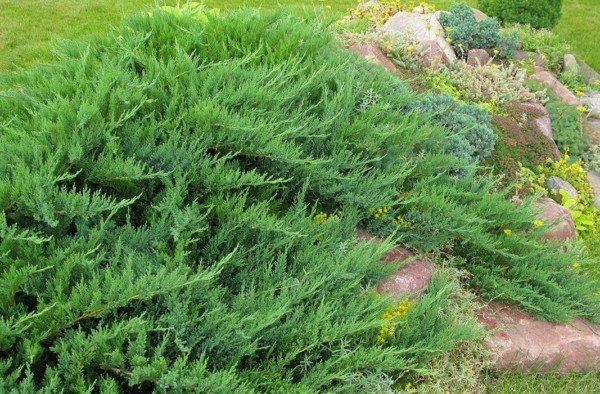

Planting and soil requirements
For planting junipers on your site, you should choose open, sunny places, observing the distance from other plants at a distance of at least 2 meters. The soil should be sandy or with the addition of sand, and its acidity should be in the range of 5-7 pH.
Of all the varieties, the common juniper is the most unpretentious to planting conditions, only it can not lose its proper appearance growing in the shade. A few hours before planting the juniper in the soil, the container should be placed in water to prevent possible root injury.
Description and characteristics of the plant


The life span is 400-500 years. It can reach a height of 30 meters, but different types are classified: low, medium, tall. In the Russian climate, undersized up to 1 meter is more common. It is well suited for decorating an infield, like a thuja.
Juniper buds are almost without scales, sometimes they are shrouded in leaves. A whorl of needles with a longitudinal groove. In young plants, the leaves are needles, over time they become scaly. The needles are the same as that of all cypress trees: green-blue in color, with 3 edges and sharp ends.
Spikelets are of two sexes. Male - paired stamens, covered with scales with anthers, which are easily torn off. The female spikelet consists of a single whorl or 4-6 whorls of carpels with 2 buds.
Important aspects
Such a coniferous plant, even without a haircut, can give the site a beautiful and rich look. It is necessary only for some of its varieties, the branches of which are scattered chaotically and erratically. Juniper pruning is done when the plant wants to give a unique shape or when creating hedges, then this is done several times a season.Thanks to this, gardeners are trying to restrain growth and make the bushes more compact. Such conditions are typical for creeping varieties such as Sky Rocket or Blue Airrow.
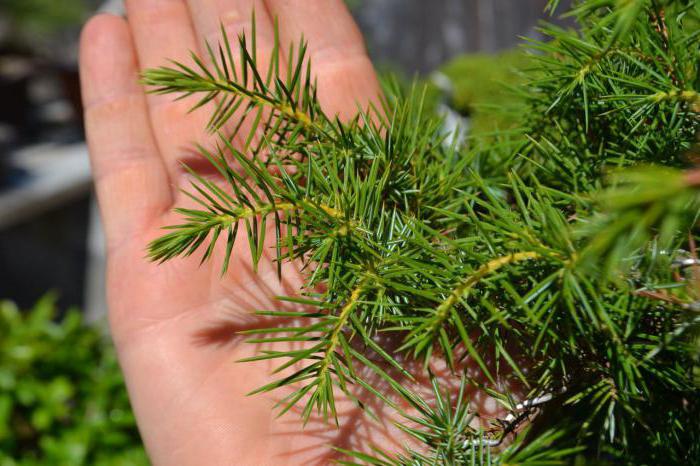

In this process, you must be careful not to damage the young shoots of the juniper. Pruning and shaping are carried out only after a serious examination of the plant for the presence of large branches that are either knocked out of the crown or fall off due to their weight. It is necessary to cut them so that they lean to the side, but at the same time do not leave the plant bald. Some varieties, such as the blue chip, cannot get a beautiful shape, and they only need this procedure to remove old and dried branches that look sick.
How to care for
The plant is resistant. Perfectly survives severe frosts, sultry heat. When planting, the juniper must be watered abundantly. Water once a week for the first year. Then you can not water at all.
There are special rules for care immediately after planting work:
- Mulching with peat with sawdust. The cover must be 4 cm thick.
- Conduct top dressing with nitroammophos (50 grams are diluted in a bucket of water and watered at the root).
- Regular irrigation is unnecessary. Exclusively during dry weather.
- In the morning and evening, spray the crown with a shower nozzle or a spray bottle.
- Cut dry, limp twigs.
Tools and means of protection
Conifers have interesting and unique properties, one of which is toxicity. Juniper is just that plant, the essential oil of which can negatively affect the human body. If you have to cut the "Cossack" variety, then you must use gloves so as not to harm the skin. It is required to remember that the resin is not washed off from it, which means that a protective suit or change of clothing is simply necessary. Juniper pruning in spring is done with well-sharpened pruning shears. In the process, it is required to regularly wipe it from the resin in order for it to work correctly.
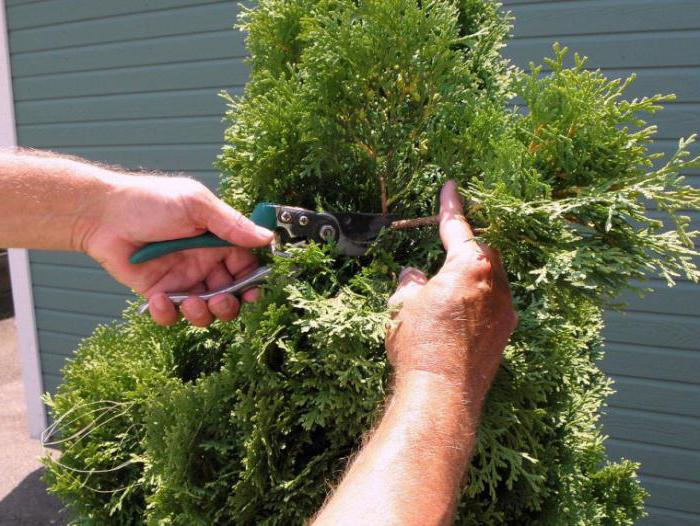

Florist tips
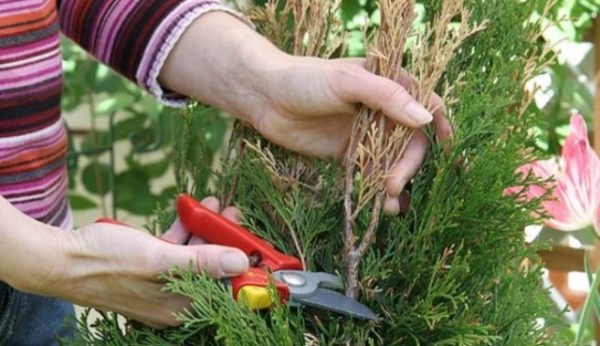

Damaged branches are cut off to the level of a healthy area by sultry heat or long frosts. Clay is added to soil containing a lot of sand, or very dry. If you sprinkle the needles with plain water, they will retain their elasticity and freshness longer.
Planting an evergreen coniferous plant in your area is a very wise decision. Indeed, in addition to a pleasant smell, it is beneficial - it has a bactericidal property (kills bacteria). The branches are cut and placed in the room where the patient with bronchial asthma, or ARVI, lives. From the variety of varieties of juniper bush, it is easy to choose the one that suits the specific idea or idea of its owner.
This juniper is considered to be the most popular species. It grows at high altitudes, always remains green, the shrub reaches large sizes. Flowering begins in mid-spring, and the seeds are fully ripe in October. The plant is often used for decorative purposes. But remember that juniper is considered poisonous, as it contains toxic compounds, including essential oils in its list. Today we will figure out how a Cossack juniper is transplanted in the fall.
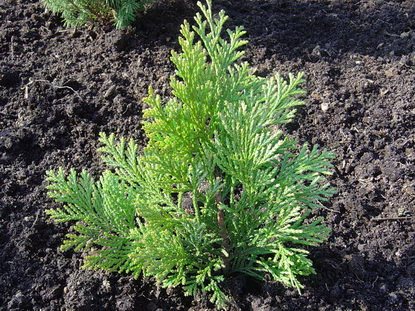

Care
It is not difficult to take care of junipers, as they are unpretentious to climatic conditions and soil. But nevertheless, in the spring, nitroammofosk should be added to the soil at the rate of 45 g per 1 square meter or "Kemira-wagon" (add 20 g to 10 liters of water).
In watering, this plant is also undemanding, as it is drought-resistant. It is worth watering the juniper only once a month, provided that the summer is very hot. Once a week in the evening, the plant can be given a warm shower from a sprayer to increase the humidity in the air.
Perhaps you will be interested in the article about the varieties of the Gold juniper.
You can read about the composer of the Golden Carpet juniper here.
Young junipers need periodic loosening of the soil; it should be carried out after preliminary moistening. In juniper, only dry branches should be pruned regardless of the season. If the plant is young or has very spreading branches, then for the winter period it must be covered with burlap and tied with twine.
Features of planting and care
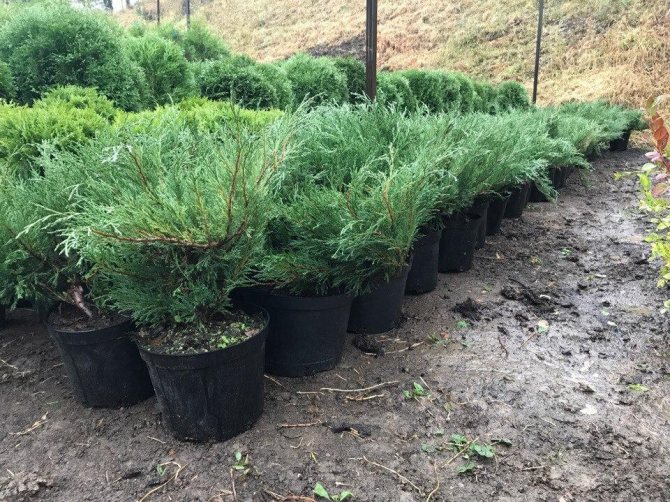

Most varieties prefer open sunny areas, tolerate light shading.
The Cossack variety is considered undemanding, but it is important to select the place of cultivation in accordance with the characteristics of a particular plant. Most varieties prefer open sunny areas, tolerate light shading. Inadmissibly close flow of groundwater, location in a lowland, in flooded areas.
High resistance to gas pollution and smoke will make it possible to cultivate this juniper not only within the city, but also to be located close to industrial enterprises and highways. When choosing a site, one should take into account the soil-protective properties of the species, the permissibility of planting on slopes and stony soils.
Landing
The procedure is carried out using the spring transshipment method. It is permissible to transfer container-type seedlings into open ground during the active growing season. The landing pit is prepared in advance. The dimensions of the dug hole should be 2-3 times larger than the earthen lump on the root system of the Cossack juniper. If the soil is too heavy, pour about 20 cm of a drainage layer of broken brick or crushed stone and coarse sand on the bottom.
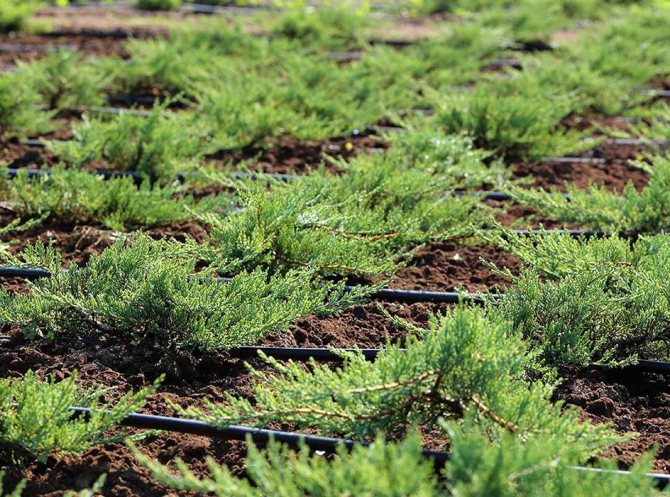

The procedure is carried out using the spring transshipment method.
The soil mixture should be prepared from sod land, high peat and river sand, taking these components in a 1: 2: 1 ratio. It is recommended to add dolomite flour or wood ash, compound fertilizer. Pour the prepared composition on the drainage, then put the juniper with the preserved earthen clod so that the root collar is not buried, exceeding the soil surface by 5 cm.Fill the gaps with soil mixture, draw a near-trunk circle, water abundantly. When the water is completely absorbed, the surface of the earth is mulched with pine bark, rotted compost or peat.
Care
For some time after planting, the Cossack juniper should be more carefully looked after. Water the first week, sprinkle the crown, shade from direct sunlight. Some varieties may have differences in agricultural technology, which must be taken into account when buying a seedling.
Basic care for this coniferous species includes:
- watering during severe drought;
- sprinkling of the crown;
- weeding;
- loosening a dense earth crust;
- periodic moderate feeding;
- sanitary, forming pruning;
- insulation for the winter;
- protection from diseases and pests.
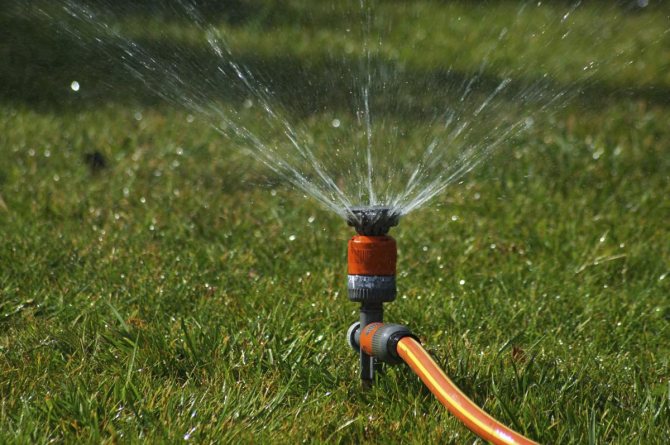

Moisten the crown in a drought by sprinkling once a week in the evenings.
Watering the Cossack species of juniper is enough 2-3 times per summer, provided there is a strong heat and no rain. Moisten the crown in a drought by sprinkling once a week in the evenings. When a dense crust forms on the soil surface, loosen it, since the horse system must receive a sufficient amount of air. Remove weeds immediately so that they do not take food from the juniper.
Feed from the second year after planting. The procedure should be carried out in the spring, combined with watering, use a solution of universal fertilizer for conifers. At the beginning of the growing season, it is necessary to inspect the crown of the Cossack variety, remove all damaged shoots. Fast-growing varieties are recommended to be subjected to formative pruning, which allows you to stop growth and give the plant the desired shape.
To reduce the negative effects of winter, the bush is being prepared in late autumn. It is necessary to do water-charging irrigation and mulch the near-trunk circle with a thick layer of peat or other natural material. In the spring, it is imperative to remove the mulch so that the root collar does not rot. Varieties that tend to break off under the weight of snow, it is advisable to tie, burn under the rays of the sun in February - March, cover with spruce branches or burlap.
How to propagate Cossack juniper?
Quite often, seeds are used to propagate Cossack juniper, but before planting it in the soil, it is necessary to keep it in a cool place for some time. Juniper seeds have a hard fruit shell and therefore grow rather slowly. Therefore, it is recommended to change the period of cold stay - to warm, and then cold again, and so on every 2-3 months. There is no need to soak the seeds for a very long time - just a few seconds will be enough, but in boiling water. This will help you speed up the germination process.
When the seeds are ripe, it is best to germinate them in a cool place, or on a windowsill. Some varieties start sprouting as early as spring, but in most cases you will have to wait another year. Seeds are sown either in one common space or in separate pots (but only when they are large enough to handle). Let them grow in a pot until they are big enough to grow on their own. Carrying out the reproduction of the Cossack juniper, it is required to plant seedlings on open ground at the beginning of summer.
If the seedling is stored for a long time in a dry place, then the seed can remain viable for several years.
If you decide to choose ready-made cuttings of Cossack juniper for reproduction, then they should be at least 5-10 centimeters in length. To begin with, keep them in a cold place September-October, and the first full-fledged bushes appear already next fall. It is recommended to transplant in the fall, since in the summer the needles evaporate a large amount of moisture.


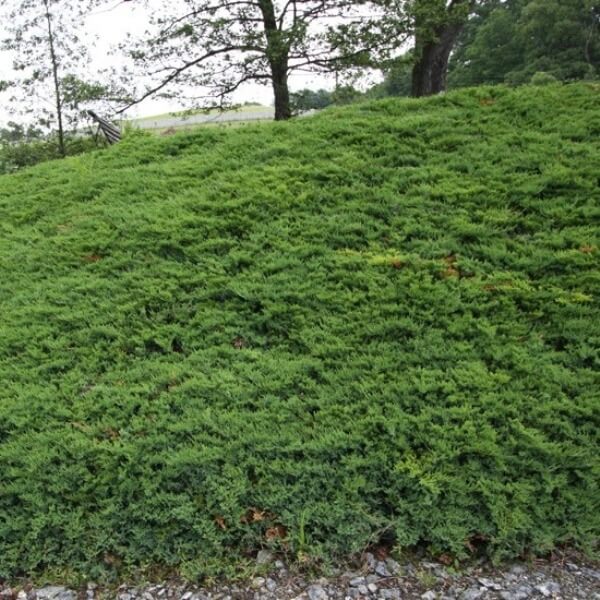

Seed planting
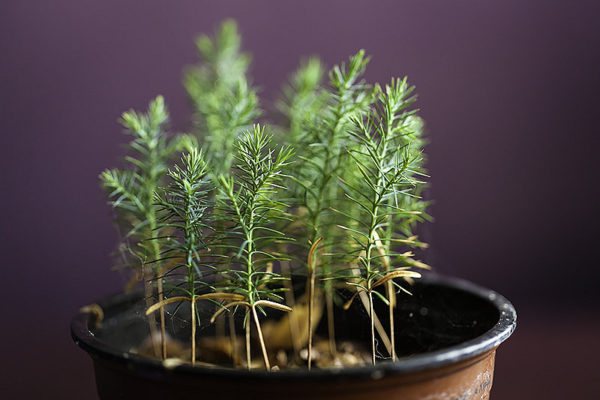

Juniper seeds are taken from adult, fruiting crops. When the berries begin to darken. They are subjected to thermal and mechanical treatment. They are kept in the freezer for several months. This is done so that the shrub can withstand low temperatures. Only then can they be planted on open ground. This process is called stratification.
They do this on their own: take a mixture of peat, moss, sand about 10 liters. Divided into two parts. First, put one part in a box, sow with seeds, and pour the second on top completely. The box is put on the street for the winter so that it is covered with snow. In May, it can be planted in the garden. Weed, loosen and water regularly until full seedlings grow.
Fertilizers
If you choose the right varieties that are resistant to domestic climatic conditions, then care for young plants will be minimal. They practically do not get sick and are not damaged by pests. Active care of the juniper is required in the spring: pruning, spraying and feeding. Complex and nitrogen fertilizers are used for it. In no case should cow or bird humus be poured under the plant, as it will burn out and die. And it is also not recommended to loosen the soil around, since the root system belongs to the surface type, because of this, the nutrition of the trunk will deteriorate, and the juniper will simply begin to wither. For him, mulching the soil with the help of coniferous land harvested directly in the forest is sufficient.
Landing
The plant does not take root well, so it is worth paying special attention to the preparation of the seedling and the place.
Selection and preparation of a seedling
Good seedling:
- Has no dead branches.
- The bark is intact, without growths or suspicious inclusions.
- Possesses a dense earthen lump.
Sometimes, instead of Cossack juniper, they can sell false Cossack juniper. You can distinguish it by the color of the needles: in the real one it is brown, in the other it is gray.
An easy way to root a healthy seedling is to pre-soak its root system in growth stimulants.
Before planting the plant, it is kept in a pan with water for 2-2.5 hours so that the earthen lump grabs.
Site preparation


Juniper needs sunshine
Most varieties of plants prefer places without stagnant moisture with good lighting. The minimum distance between shrubs is 0.5 m.
The planting hole is made 3 times more of an earthen coma. Its bottom is lined with drainage, a mixture of sand and brick fragments is used for it. Drainage height - 20 cm.
Sprinkle the roots with a mixture that is prepared by hand. It consists of peat, turf and sand in a ratio of 2: 1: 1.
Landing technology
Planting in open ground is recommended in April or September, while maintaining high humidity.
When planting adult plants, the root collar is not deepened. For the young, it is left at soil level
After the procedure, the juniper is watered abundantly.
Plant transplant
If possible, do not transplant to another location. An adult plant does not tolerate this procedure extremely well.
If there is a need, then it is necessary to follow the recommendations.
- Examine the juniper for diseases or mechanical damage. They weaken the immune system and significantly reduce the survival rate in a new place.
- Dig in the plant 6 months before transplanting, cutting to the diameter of the crown. Varieties with vertical growth dig in along the diameter of the double crown, if possible.
- Having dug a bush, its roots are watered with a growth stimulant.
- After that, you can plant the plant in another place, prepared in advance.
- The juniper is watered abundantly. Do not allow the codes to hit the crown, which is especially important for creeping varieties.
How often to cut junipers?
As needed, but not more often than 2 times a year. For example, the Cossack juniper is a fairly fast-growing species, and if you already started to shape a figure out of it, you will have to take care of it regularly. And if you run a juniper groundcover on the frame for the topiary, a haircut may not be necessary at all - except that some shoots will begin to hang from the frame. The same Cossack juniper in most cases is not cut at all (only sanitary pruning is carried out) - its spreading creeping bushes can often be seen in city flower beds and in parks.
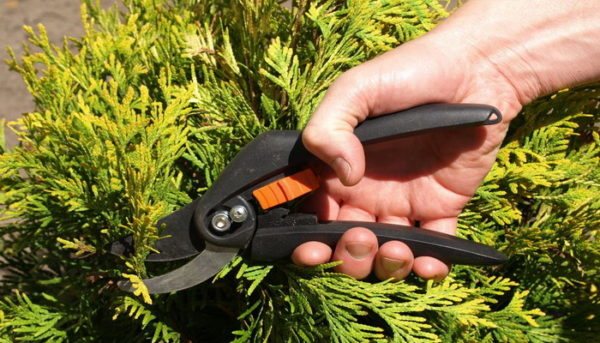

Diseases and pests


The greatest danger is rust.
If the cultivation technique is violated, the Cossack juniper will often suffer from fungal or bacterial infections. Lack of light, excessive humidity, lack of fresh air and low temperatures are provoking factors for the development of such diseases. The greatest danger is rust. For treatment, it may be necessary to prune and burn the affected shoots, spray the remaining aerial part and the trunk circle with a fungicide solution.
The pungent odor and poisonous substances contained in the plant scare off most insects, therefore Cossack juniper is rarely affected by pests. If they have settled, measures should be taken immediately so that there is no strong weakening of the bush. To fight, use insecticides and acaricides, as well as products prepared according to folk recipes.
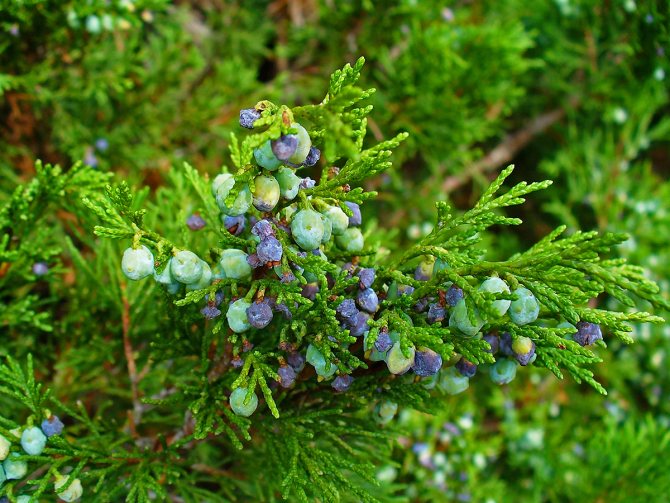

Cossack juniper has many varieties, but we must not forget about the toxicity of the species.
This type of coniferous species is highly decorative and unpretentious in cultivation. Before planting, you need to choose the right place so that you do not have to transplant the plant later. Cossack juniper has many varieties, but we must not forget about the toxicity of the species.
Juniper Cossack, varieties
Juniper Cossack is a very popular and favorite plant among gardeners and landscape decorators. More than 20 of the most diverse varieties have been bred by breeders. Landscape designers most often use the following varieties for their flower arrangements:
- cossack juniper tamariscyphonia;


The shrub has a flat top and grows a meter in height, and reaches more than two meters in width. Its branches are open with upright dense shoots. Needles are needle-like, dark green.
- Cossack juniper "Variegata";
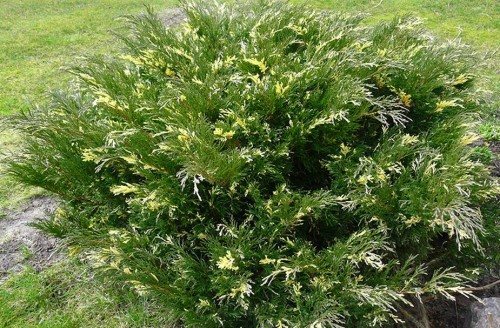

This variety was bred by scientists in 1855. Has a funnel-shaped, compact crown. It reaches a width of 1.5 m and a height of 1 m. The juniper itself is green, but there are many branches on it, which are painted in cream. Juniper branches are dense, curved in the form of an arc. Juniper Variegata looks gorgeous in various rock gardens or rockeries with stones of different colors and shapes.
- Cossack juniper "Rockery Gem";


Produced in Holland. The shrub has straight branches that are widespread above the ground. A few years after planting, the plant reaches 50 cm in height, and reaches more than 3 m in width. The needles are prickly, rich in grayish-green color.
- Cossack juniper "Blue Danub";
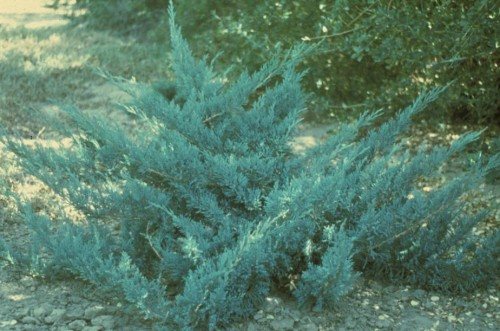

The Blue Danube juniper is a lush shrub, whose crown is rubbed several meters above the ground. Its height is 30-50 cm, width is 1 - 3 m. The needles are in the form of scales, straight, slightly pointed from above. The shrub is colored blue-gray.
- juniper Cossack "Erekta";
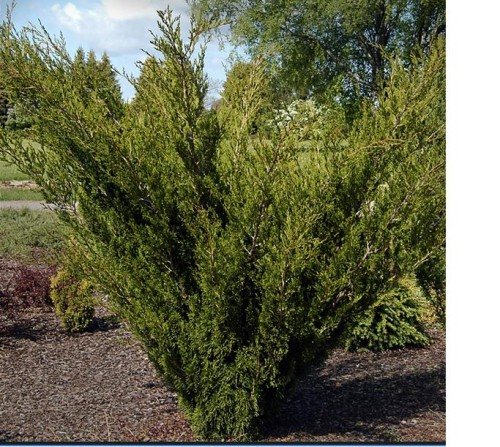

Juniper Cossack "Erekta" upright, reaching a height of two meters. The vertical branches form a pyramidal shape. Needles in the form of dark green scales. This type of shrub is not afraid of the sun and is heat resistant and does not require abundant watering, unlike other varieties of juniper. The advantage is propagated by cuttings.
Description of the species
The Latin name of the Cossack juniper is Juniperus sabina. Outwardly, it is a shrub form creeping along the surface of the earth, up to 1.5 m high. The plant rapidly grows in the surrounding area, forming dense thickets. Sometimes among the representatives there are trees up to 4 m with curved trunks. The bark exfoliates in thin slices, is colored reddish-brown.
One specimen always has 2 types of needles - needle and scale-like. The needles are soft, erect, pointed, 0.4-0.6 cm long, with a bluish-green upper surface, with a clearly visible vein in the middle. With age, the needles take on the appearance of tiled scales. The leaves on the branches last up to 3 years. The culture is dioecious, the cones are looking down, 0.5-0.7 cm in size, brownish-black, covered with a bluish bloom. The shape of the two-seeded fruits is round-oval. Seed material ripens in the fall and spring of the following year.
On a note! The Cossack variety of junipers differs from others in a specific, pronounced smell that appears when rubbing needles or twigs in hands.


One specimen always has 2 types of needles - needle and scale-like.
Species characteristics:
- drought resistance;
- photophilousness;
- winter hardiness;
- low demand for the composition and nutritional value of the soil;
- the ability to endure gas pollution and smoke pollution in cities;
- possession of soil-protective qualities.
The wood is quite soft, but at the same time strong, fine-grained, it can be used in some branches of the woodworking industry. The essential oil of young shoots of the Cossack variety is added to products to protect woolen items from moth damage. Preparations from various parts of the plant in pharmacology, homeopathy and cosmetology are mainly produced for external use.In landscape design, the view decorates the slopes, slopes, rocky hills, lawns, rockeries, forest edges.
Distribution area
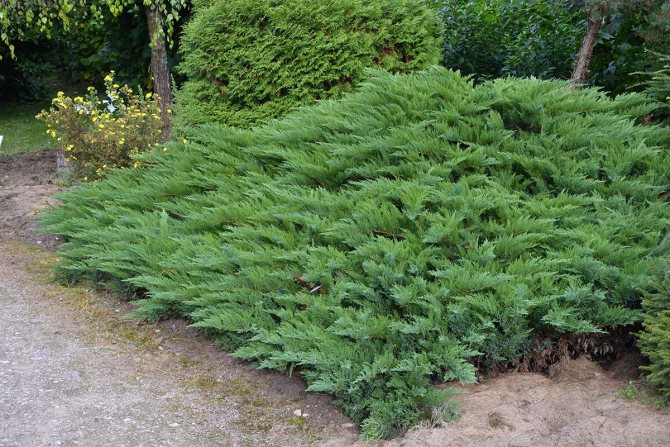

The species grows in forests and groves of the steppe zone, on rocky mountainous terrain, sandy hills.
In its natural habitat, the Cossack juniper is found in Asia Minor and Southeast Asia, South and Central Europe, in the Caucasus. In Russia, it is distributed mainly in the Urals, Siberia, Primorye. The species grows in forests and groves of the steppe zone, on rocky mountainous terrain, sandy hills. From the lower mountain belt rises to 1000-2300 m above sea level, forming densely planted massifs on the upper tier.
How to plant a Cossack juniper
In the spring, it is better to start planting Canadian junipers in open ground. The basic rule is that the place where the juniper is going to be planted should preferably be dry and well lit. In dark places, the shrub quickly loses its decorative appearance. In one place, it is better to plant different types of junipers, which differ in shape and color. However, it should be remembered that the distance between them must be at least 0.5 meters. Before planting, you should prepare the soil. Dig a hole two or three times the size of the roots. Put drainage on the very bottom of the bottom (small stones, old crushed brick). If the soil is acidic, add lime or dolomite flour. The soil is loosened, the roots of the plant, placed in a dug hole, are laid horizontally and covered with abundant sand, leaving a small depression so that water does not flow out during watering. The root collar remains open. Then at the ground, the hole left is filled with sawdust or tree bark. They will protect shrubs from weeds and retain moisture better. The common Cossack juniper is not whimsical to soil species and grows well in stony soil, in fatty or acidic.
[collapse]
Reproduction
In nature, Cossack juniper spreads with the help of seeds and cuttings. At home, you can additionally carry out cuttings or vaccinate. Seed material for breeding is rarely used, since the method is the longest and does not preserve the varietal characteristics of the plant. If it is necessary to carry it out, the seeds must first be stratified. Grafting is used for elite hybrids, but it is also not always justified, since there are simpler breeding methods.
More often it is recommended to plant self-formed layers. When in contact with the ground, the shoots of the Cossack juniper sprout roots. When they reach their normal size, it is enough to simply plant a bush. To root a branch of a variety whose shoots do not creep along the ground, it is enough to bend it, attach it with wire, periodically spud and water the place of contact with the soil.
Cuttings are carried out in spring or late August - early September. The shoot should be torn off with the heel, the cut site should be treated with a growth stimulator. Root in a moist, loose nutritious substrate, deepening by 3-5 cm. A full-fledged root system will be formed in 2.5-3 months, after which it is transplanted into open ground. Juniper cuttings can be grown in containers for the first 2-3 years.
Juniper in the garden. Origin
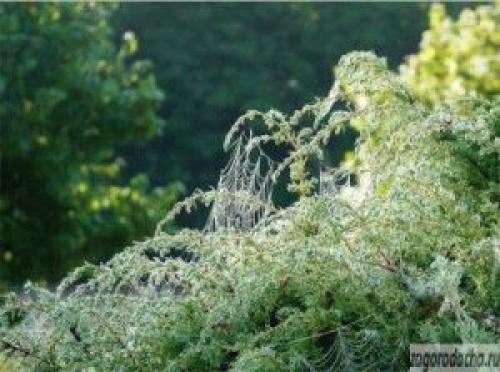

Juniper (Latin Juníperus) is a coniferous plant of the Cypress family (Cupressaceae). Junipers grow naturally in the northern hemisphere, in the temperate and subpolar climates, as well as in the high mountains of the subtropical zone. These conifers have many varieties and species that differ in height (from 15 cm to 40 cm), cover crowns (spherical, conical, columnar, creeping), color of needles and bark (dark green, light green, gray-blue, golden).Due to their wide variety, junipers will find application in any garden. They can grow where other plants can cope - in the sun, on dry, barren, sandy soil.
Appearance


Juniper is a rather diverse species, within which we will find both low and creeping, and widely growing bushes, trees with a column or cone-shaped, pointed crown. Some species develop leaves only in the form of needles (eg. Common juniper, recumbent), others have needles and scales (eg. Cossack juniper, Chinese, Virginia). The needles of this plant are hard and thorny, located on the shoots, 3 in a bunch.
Some of the junipers are dioecious (there are females and males), others are monoecious (one specimen has female and male flowers). The presence of cone-berries is characteristic of all species - they are spherical, small, dark blue, covered with wax, with a bluish or silvery bloom.
Growing conditions and care
Junipers should grow in sunny areas, they should not be planted in the shade, they may wither. They grow best in sandy soil, barren, dry, rocky - that is, where other plants cannot cope. They prefer calcareous soils. These plants are completely frost-hardy, insensitive to drought and air pollution, making them ideal for growing in urban environments. No fertilization required. They tolerate cutting very well and are not afraid of pruning, therefore, we can control their growth (and these are plants that grow quite strongly and expansive). Common diseases include shoot death and gray mold. Pests: juniper aphids and scale insects, mealybugs, juniper moths, flat beetle mites.
Application
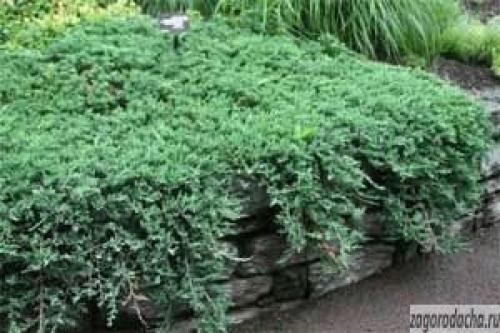

Junipers are ideal for naturalistic gardens, heathland, alpine slides. You can plant them on slopes and areas with a slope, retaining walls, they are also suitable as ground cover plants, instead of a lawn (creeping species). Looks good in combination with other conifers, but can also be planted one at a time in a designated area on the lawn. Among the many species and varieties, you can find plants with needles in dark green, bluish, silvery green, golden - which will represent an interesting colorful element in the garden.
Juniper Varieties
Juniper Chinese (Juniperus chinensis) - This variety includes both fairly large trees and medium-sized shrubs, which can have a conical or wide spreading crown. This variety has needles (sharp, prickly, arranged in 3 in a bundle) and scales (small, blunt, tightly attached to the shoot).
Scaly juniper (Juniperus squamata) - this variety includes both creeping forms and bushy ones with horizontal or raised shoots. These shrubs are dense, dense cut and reach small sizes, so they are ideal for small gardens, for alpine hills, wastelands, retaining walls and slopes. They have only needles, which are hard and prickly, bluish above, green below.
Coastal juniper (Juniperus conferta) - This species has the form of a low, spreading bush with dense, creeping shoots. Grows to about 30 cm in height and can grow to a width of 1.5 m. The needles are long, prickly, bright green in color, with whitish stripes on the upper side. This species is monoecious, produces large, spherical, cone-berries, dark blue, which are covered with a waxy, silvery bloom.
Cossack juniper pruning methods
The specific pruning method is selected based on the shape of the crown. There are two main types - point and blind.
With pinpoint pruning, each shoot is shortened separately, while the formed bud is removed.This method is often used in the early stages of shaping a young bush. Also, the method is used when they want to preserve the natural, natural look of the shrub. Pruning is done at an angle of 45 degrees 2-3 cm above the kidney.
With the blind method, young shoots are massively trimmed using garden shears or a brush cutter. The location of the kidneys is not taken into account. This method is used in the design of living juniper hedges to create a design form.
Cutting deciduous shrubs and trees
Unlike conifers, deciduous trees should be cut more often, on average once a month, i.e. 3-4 times per season. We continue to cut derens, chubushniks, willows, bladders
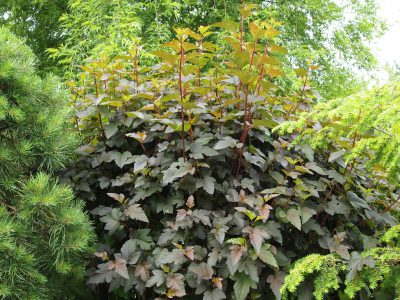

Bubble before clipping


Bubbles after shearing Cutting the white turf
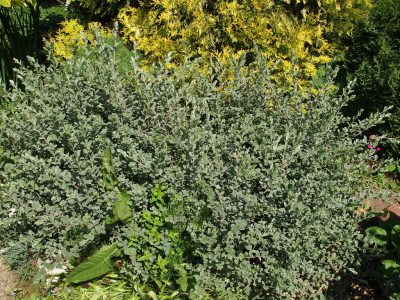

Willow creeping before shearing
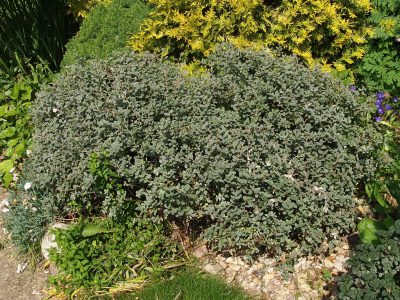

Willow creeping after a haircut
The results of the formation of deciduous trees, which we carried out at the beginning of the month, are already visible.
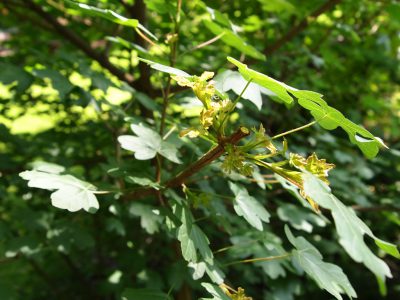

Field maple overgrows after formation
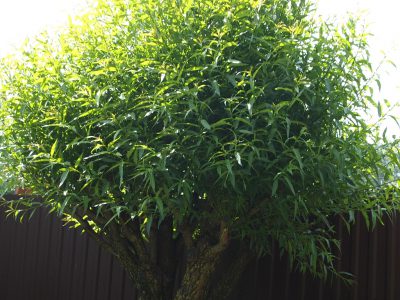

Willow brittle after anti-aging pruning
The heat that happened in June this year does not allow for a full pruning of the western thuja, we are waiting for a decrease in temperature and rain. We will publish the result in July.
Recently, one of the favorite plants for home cultivation has become a juniper, which easily survives formation. Gardeners consider its main advantages to be ease of care and maintenance, as well as the resistance of the culture to drought and cold. Grows easily in various soil mixes, even the poorest. The juniper bush is often used to create a hedge in home gardens. Further in the article about the peculiarities of the culture, what is the proper care, how the pruning of the juniper is carried out and when.
Photo gallery
How to find Juniper in the forest. Forest juniper in the garden: the secrets of successful cultivation
Planting conifers is often used for garden decoration and decoration of your own plot. These are very capricious pets, which not every gardener can grow. A good alternative to purchasing ready-made seedlings is to plant a forest juniper. In order for a forest juniper to take root in the garden, it is necessary to take into account many important nuances of its cultivation.
How to properly dig a seedling
In their natural habitat, forest plants have a lot of competition. That is why, adult juniper bushes have already managed to win their "place in the sun", which means they simply will not survive the transplant. To ensure yourself at least a small chance of success, it is advisable to look after a small bush. They dig it out very carefully, together with a large lump of earth on the bayonet of the shovel. It is worth noting the location of the apex relative to the sun. It is advisable to transport the bush in a plastic bag, tightly fixing it with the top.
In addition to its high decorative value, forest juniper also boasts medicinal and disinfecting properties. It perfectly drives away pests, freshens the air and destroys harmful viruses and bacteria. That is why it will be easy to breathe next to him, the mood will improve and even the headache will pass. Such a healer plant should definitely appear in your garden!
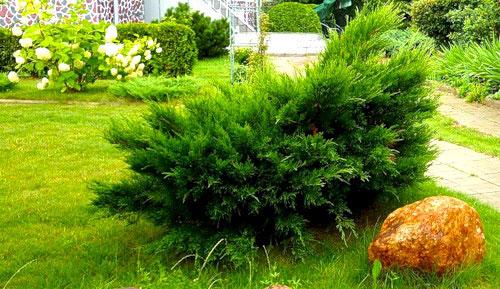

How is the landing
Another secret to success is moving quickly to a new location. To do this, it is advisable to prepare a well with a fertile mixture in advance. For this, sod land, sand and humus are mixed. The reaction of the soil should be slightly acidic, it is imperative to make good drainage at the bottom. Despite the fact that in the wild, juniper grows well in swampy areas, it is better to replace such extreme with frequent watering in the garden.
The nuances of proper fit and care:
- The depth of the planting hole should match the height of the earthen coma. The root collar of the plant should be level with the ground.It is also worth considering the location of the bush relative to the sun, as it grew before.
- It is advisable to provide a landing site in the shade or partial shade, but away from tall buildings. The optimal neighborhood will be provided by tall perennials, berry bushes and undersized trees.
- It is better to plant junipers in trenches at some distance from each other. Subsequently, the plants will grow, occupying new territories, which must also be foreseen in advance.
- After planting, the trunk circle is mulched with needles and sawdust.
- For better rooting, the first days the plant is watered with stimulating solutions.
- It is imperative to make a hole around the trunk for watering. For each bush at a time, use one and a half to two buckets of water, preferably slightly acidified. The size of the hole is periodically expanded so that the plant receives enough moisture for active growth.
- A winter shelter for a juniper is constructed from branches, leaves and needles. With the onset of heat, the protection is removed, and the plant is actively watered throughout the growing season.
- It is necessary to cut off shoots only from the third year of life. Carry out the procedure in early spring, removing dried and broken off branches from the bush. In addition, garden compositions can be formed from juniper, but excessive pruning can disrupt growth, so do not get carried away.
You can clearly see the process of planting a forest juniper on the proposed
It is not so easy to provide sufficient care for a forest juniper at home. To do this, it is necessary to regularly carry out abundant watering, inspect and treat the plant from diseases and pests. It should be noted that forest juniper can become a source of rust infestation of apple trees, so it would be a big mistake to place these plants in close proximity to each other.
Planting a forest juniper is not an easy undertaking. This plant is quite capricious and can hardly endure a change of place of "residence". Having dug a plant in the forest, it is imperative to orient it in a new place according to the sun, and also to provide conditions as close as possible to its usual conditions. The features of growing juniper planted from the forest are discussed in our article.
Haircut rules
It is best to trim on a cool, cloudy day to reduce evaporation at the cut. Intense evaporation leads to the formation of dry brown tips. To reduce evaporation, sprinkling of the crown can be carried out before cutting conifers. Wet needles are easier to trim and the tool dulls less.
It should be remembered that many conifers are poisonous, for example, thuja, Cossack juniper, so it is necessary to protect your hands from contact with the needles. Scratches on the hands take a long time to heal.
After clipping, the plants must be shed. You can spray on the crown using stimulants, for example, "Epin-extra", "Emistim", "HB-101", etc.
When to prune a crop
Junipers, like other plants, are best pruned in the fall or when spring comes. In more detail, the best period is from September to October and from April to May. A feature of the plant is the easy tolerance of pruning, which allows such pruning to be carried out without reference to the period. The only exceptions are June and July, when shoots are actively developing at the peak of the juice movement. Also, you should not carry out such procedures in winter.
Important! Before cutting the juniper for the first time, the bush must take root and begin to actively develop. This means that the first haircut is carried out no earlier than 2 seasons after disembarking to a permanent place.
For juniper bushes, one pruning is enough, but if necessary, you can increase it up to twice a year. This applies to varieties that are fast-growing plants, from which they have already begun to form a figure.With the frame method of growing, plants can not be cut at all if they do not interfere.
The best varieties for landscape design
Superiority among gardening art, incl. for curly haircuts of conifers, Europe possesses. In general, for decorative decoration of the site, it is best to prefer shade-tolerant plant species with limited growth. The first characteristic helps to keep the crown in a uniform state. The limited and slow growth allows the number of circumcisions required to be reduced to a minimum.
Popular coniferous crops that lend themselves well to formation are:
- Thuja western;
- Cross-pair microbiota;
- Norway spruce;
- Juniper Chinese, Virginia, ordinary;
- Yew pointed;
- Lawson's cypress.
Summing up, it should be recalled that spring and autumn are considered the best time for pruning juniper shoots, it is possible to carry out the procedure in summer. At the same time, in central Russia, it is not recommended to prune in the second half of summer, since in this case the shrubs will not be able to fully prepare for the arrival of cold weather in time and in full. Cutting in autumn is recommended for the purpose of sanitizing the plant to remove dry, diseased and damaged branches.
When and how to land
The plant is planted on the site in spring and autumn (in September). In the first case, you need to be in time before the start of sap flow.


Where is better to plant
Juniper prefers sunny places with low groundwater; it does not tolerate wet roots.
In terms of compatibility, this plant looks good next to other conifers, perennial flowers, ornamental shrubs, but not too massive. Still, you should step back a little from such, planting a Cossack juniper.
Requirements for the composition of the soil
There are no particular preferences, however, the soil is desirable neutral or slightly acidic.
If you have a lot of lime on your site, then when planting, you should definitely add peat, sand, leveling the mineral composition.
Also, provide the Cossack juniper with looseness, permeability of the soil, so that water can easily seep out, and oxygen from the air has free access to the roots.
How to choose a juniper seedling
Planting material should be purchased exclusively from specialized stores. When purchasing, you need to pay attention to the fact that the root system is hidden in the substrate, and the plant itself has a healthy appearance. Some sellers sell both seedlings and cuttings.
Before planting, a pot of juniper must be spilled with plenty of water, or placed in a container, a tray with water for several hours.
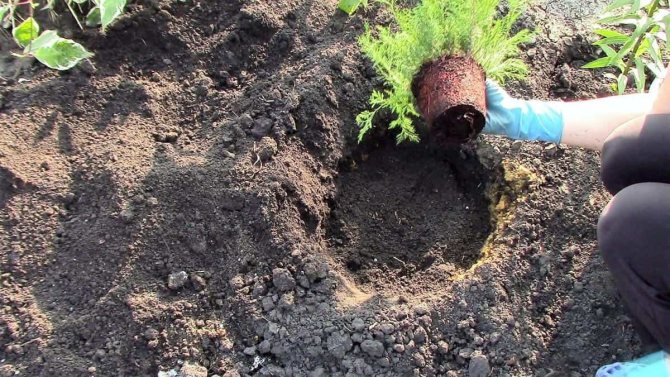

Planting process
- Dig a hole with a depth of 70 centimeters, the coverage should be twice the size of the roots.
- At the bottom of the pit we lay drainage - gravel or broken brick and sand (20 centimeters).
- Mix the removed soil with peat or humus, add 200 grams of any complex fertilizer and put the mixture back into the planting pit. Water abundantly.
- We put a seedling and sprinkle it with earth to the root collar, compact it around.
- The planting site must be watered and mulched with sand and peat or, for example, pine shavings, crushed bark.
The landing step should be 1.5 meters, and if it is planned to form a hedge, the distance is reduced to 50-100 centimeters.
Basic haircut methods
- Point - cutting each separate new shoot to the bud formed on it. This method is used at the beginning of the shaping cut, when there are still few shoots and in places where there are few shoots, for example in the upper part of the plant.
- Blind haircut- cutting all new shoots (young growth of this year) with curb shears, brush cutter, regardless of the location of the buds. This is how hedges, conifers and deciduous plants with a well-formed dense crown are cut.
When choosing the shape of a haircut, one should try to maintain a shape that is natural for a given type or close to it. It is much easier to maintain a natural shape than a shape that is unusual for a plant.
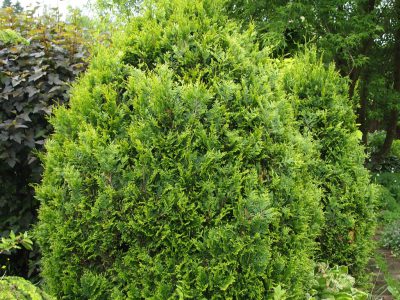

Thuja Kornik before haircut


Thuja Kornik After haircut
Is it necessary and possible to cut various varieties of juniper
Depending on the variety, the juniper can form the crown in different ways. Therefore, when choosing a variety, it is important to clarify in advance where it is planned to plant, what kind of formation is expected. For example, a Chinese Blue Point plant can be formed in a ball or pillow water. And Hibernica is perfect for cylinder shaping.


Hibernica in the form of columns
It is necessary to cut any varieties of juniper. But the goals of rejuvenation can be different - to improve the health of the shrub, to make it more decorative, getting rid of unnecessary shoots. But a haircut is needed in any case, because it helps to renew the shrub.
Some designers believe that you should not prune the juniper, because then the natural shape of the plant will be preserved. This usually applies to creeping varieties. But it is still necessary to cut off the shoots that are sick or damaged, otherwise there is a risk of death of the entire plant. Also, a little intervention is needed for columnar varieties. Usually, they only cut off what has gone beyond the shape of the crown.
Decorative haircuts
Topiary pruning involves giving the juniper crown a geometrically correct or original shape. This takes into account the peculiarities of the skeletal structure of the plant. It is important that the planned geometry of the crown corresponds to the natural form of the culture, since it is impractical to try to "build" a ball out of a tall tree or cut a spiral out of a squat bush.
The nuances of decorative trim:
- It is not difficult for common junipers to shape a cylinder, as this geometry is almost natural for most representatives of this species, including Meyer, GoldCone, Hibernica and the Chinese Spartan species.
- For rocky junipers Skyrocket and WichitaBlue, a cone and pyramid-shaped haircut is ideal, just like for an ordinary Compressa. They also make slender silhouettes in the form of a spiral or chess pieces well.
- It is easy to trim the globular shapes of the Chinese ephedra KuriwaoGold, BluePoint and MintJuler medium juniper, which are characterized by the original color of the needle-like plumage. The natural structure of the crown of these shrubs makes it possible to form a cube without much effort. Similar variations work well with the rocky WichitaBlue variety. The above crops, as well as the rocky Skyrocket, are suitable as a basis for creating ovoid crowns and sedentary figures of modest-sized animals.


Decorative juniper GoldCone
Novice designers are invited to use the natural character of the crown and learn the art of topiary, slightly trimming the natural shape of a juniper bush, cutting a cube, pyramid, cone or spherical shape. For the design of straight lines, templates in the form of guides are used. After mastering the work with simple forms, they begin to perform various spirals, bersot and arches. Virtuosos of the art of decorative haircut of evergreen garden dwellers create masterpieces in the form of intricate compositions, animal figures, fairy-tale characters and fantasy silhouettes.
Description of culture, features of growth
Juniper in some sources may be called heather, is a representative of the cypress genus. It is the second most popular shrub after cypress. It is known that the common coniferous bush gained popularity due to its features:
- Some species may have a prickly deciduous part, while striking with unusual external beauty;
- In others, thin, obedient shoots are striking, which can not only spread in different directions. Often, various shapes can be formed from them.At the same time, cutting a juniper is a simple process.
Plants are also valued for their ease of reproduction, because there are several ways, with a focus on different preferences. Everyone can determine for themselves a simple and effective method of reproduction, which will allow for the successful production of a culture.
Reference. The plant is considered evergreen, refers to long-livers, its height, depending on the species, can vary from 1.5 to 20 meters. The branching part may also differ: some are characterized by a scaly branch, others have straight needles.
There are tree-like bushes that have a lush pyramidal or cone-like crown.
The culture differs in the presence of unisexual flowers:
- Women's - appear as greenish bumps;
- For men - they look like earrings with 3 or 4 stamens.
Summer is the period for flowering, it usually begins in early June. Fruiting begins in August and ends in September. Juniper fruits - cones berries, are often used in folk medicine. In nature, culture grows in the forest parts of the northern regions. But this does not interfere with growing plants in suburban areas. Moreover, the bushes delight with their decorative effect, interesting coniferous smell and healing properties.
How to prune-shaping juniper, depending on the purpose
There are several types of pruning. Each of them has a specific goal, and depending on this, our actions will differ. Formation is as follows:
Point method
Part of the shoot is allocated and its fixation is carried out in such a way that it will grow on a pre-selected bud. This method is usually chosen for young and small juniper bushes. This will help shape the skeleton of the bush.
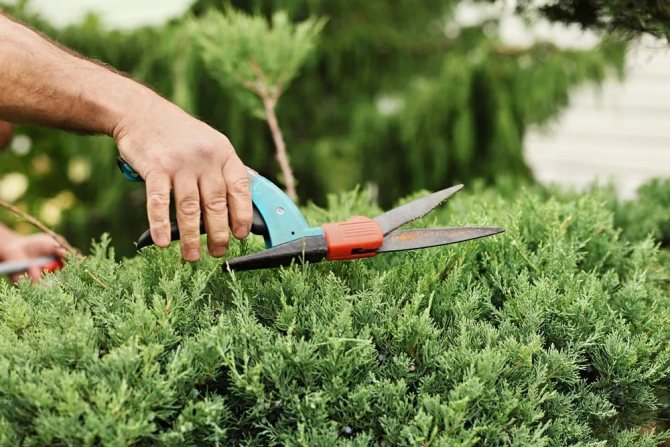

Blind way
Large garden shears are used for cutting. The method is suitable for junipers, in which a crown was formed at midnight, but it is necessary to adhere to certain dimensions of the plant. The blind method will also allow you to prune so that the bush is in the shape of a geometric shape.


Sanitary pruning
The purpose of sanitary pruning is to improve the health of the bush. But it is also needed to avoid diseases, especially when the plant is young. It is done twice a year. The first is in the spring, as soon as the snow has melted. Frozen and damaged branches are cut off. It is very simple to identify a shrub for the presence of damaged shoots - we will hear the characteristic smell of needles. You may also notice a small amount of resin.
Re-shaping is carried out in the fall. Here you need to pay attention to sick and crooked branches. Sometimes sanitary pruning needs to be done unplanned, that is, after injury or illness.
The creeping juniper has a very branched crown, it grows very quickly. For him, a pinpoint juniper haircut is suitable. Each shoot is shortened separately. This helps the bush to form properly. Shoots are cut by a third.
Cossack is also growing rapidly. Anything that looks superfluous is cut off. She tolerates a haircut well, but you need to start it from the age of two. Slices are made lengthwise, since the transverse ones worsen the appearance.
Thinning shaping
This method of pruning will allow you to get rid of unnecessary density in the crown, the plant frees up space inside the bushes. Thinning pruning is usually done in spring or summer. It is necessary to remove the shoots that grow inward, get rid of small trunks, remove the forks, because of which the bush may break. The purpose of this formation is to improve the flow of air into the interior of the plant and to evaporate moisture that can accumulate in dense areas. This will help prevent mold and mildew from forming on the bush.
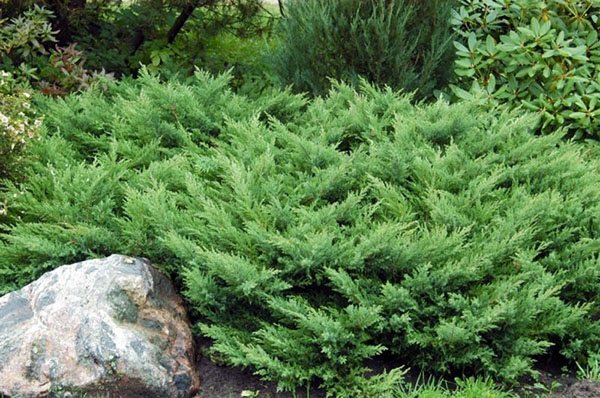

Formative pruning
An ornamental shrub grows very quickly. Because of this, the appearance deteriorates.The purpose of formative pruning is to limit vigorous growth and give the plant a beautiful appearance. The shortening is usually done annually. About 20% of the mass is removed. Shoots that go beyond the already formed crown are also cut off. You can fix using several large branches, and remove all unnecessary shoots.
As soon as we finish cutting, we need to take more careful care of the plant. We spray the bushes with a growth stimulant to avoid stress on the plant. This will allow him to recover sooner, and to start regenerating damaged shoots. Slices that remain after cutting off the branches do not need to be smeared.


Juniper shaping and shearing
Advantages and disadvantages of the variety
Juniper virginsky: description, best varieties
The undoubted advantage of the Cossack juniper is its unpretentious care. Dense bushes perform well a decorative function, covering the ground with a dense layer of greenery. Such a cover prevents weeds from spreading, freeing the farmer from weeding activities. The ability to tolerate smoke and gas contamination of the air makes it possible to plant shrubs within the city.
The significant disadvantages of the variety are:
- poor tolerance of the close occurrence of groundwater;
- exactingness to irrigation conditions;
- pronounced aggression towards neighboring plants for territory, water and nutrients;
- pronounced poisonous property of the fruit;
- specific pungent odor.


Advantages and disadvantages of the variety
Great juniper scent
I would like to pay special attention to the smell of Cossack juniper. The shrub occupies one of the leading places in the abundance of the release of bactericidal essential components. After all, it is no coincidence that our great-grandfathers still believed that he was able to protect against dark forces. The branches of the plant were attached to the very ceiling in the house and hung in barns with cattle, so that he would protect them from misfortunes. With the help of the smoke of dried fruits, they fumigated and disinfected the clothes of sick people, and also expelled the bad smell from the dwelling. If you plant this plant on your personal plot, then after ten years it can grow to an area of 20 m2, while forming dense, non-passing thickets around itself.
Juniper Cossack belongs to the family of cypress plants and for many nations, peoples served as a symbol of eternal life. Also, this type of juniper has the following varieties: Femina, Jam, Mas, Rockery, etc. Let's see what is so valuable in this shrub.
Pruning in the fall
You can cut juniper bushes for the first time not earlier than in the second year after planting in open soil. During this time, the plant will be able to take root, get stronger and grow branches. Only then can you begin to form plants. Activities for the formation of bushes in the autumn can be continued until the first frost. But it is best to remove all excess before the end of October, so that the plant has time to heal the cut areas and prepare for wintering.
Important! Cuts at low temperatures do not tighten well and become an excellent breeding ground for various harmful insects and pathogenic bacteria.
To quickly and efficiently remove excess parts, you must use the following tools:
- Special scissors with long lightweight handles for cutting trees;
- Pruner - the easiest to use is a model with elongated blades, which can pick up shoots less than 2 centimeters. Large branches are trimmed with ratchet pruning shears;
- Lopper - specially designed scissors with a long handle. Such a tool is used to trim shoots in hard-to-reach places;
- Treatments - needed to protect cut areas from insects and sap loss.
Important! The process of removing any parts of juniper and other plants should be carried out with extremely sharp, clean and disinfected instruments.
The first step is to rid the bushes of dried out branches affected by pests and diseases. Also, young shoots that do not grow properly and create crown density are necessarily cut off. It should be borne in mind that the average growth of bushes is no more than 10 cm per year, which means that in autumn you can cut off no more than 20% of what has increased over the year.
Important! We must not forget about the toxic properties of culture. Any work on pruning branches should be carried out exclusively with gloves, excluding skin contact with sap. The poisonous substance causes burns to the skin.
The first and basic rule by which specialists prune bushes is that it is better to cut a little less than to overdo it. It is necessary to remove sprout buds and shoots only after thinking well and calculating each action. Cutting off excess buds can provoke a complete inhibition of the growth and development of the culture.
Experts recommend using this scheme, removing branches in the fall:
- It is necessary to cut at an angle of 45 degrees to the kidneys. If you cut below the required level, the cut part on the tree will tighten for a long time. In addition, such actions can provoke abnormal development of the kidney, the result will be a low growth or death of shoots;
- Shoots growing upward are pruned, leaving buds at the end, which are located to the side of the center (called external). If the branchy part grows downward, the pruning is done the other way around, leaving the internal buds;
- To remove branches, you should leave about 2 cm of stumps. It will be a kind of blockage for the upper buds from the dying part. So the kidney can grow and develop in the future.
What tool is needed, preparation
Before cutting, the bushes should be sprayed with water. To trim, we need the following tools:
- hacksaw;
- long-handled garden shears;
- lopper;
- secateurs.
Pruning juniper with a brush cutter:
Tools must first be washed and sharpened. Dirt can get into the plant through the wound and cause disease. It is necessary to disinfect the cutting surface before starting work (alcohol is suitable for this).
Remember, the sharper the tools, the smoother the cuts will be, and the faster the wound will heal. Or vice versa - a lacerated and uneven wound will heal for a long time and can contribute to the appearance of a plant disease.
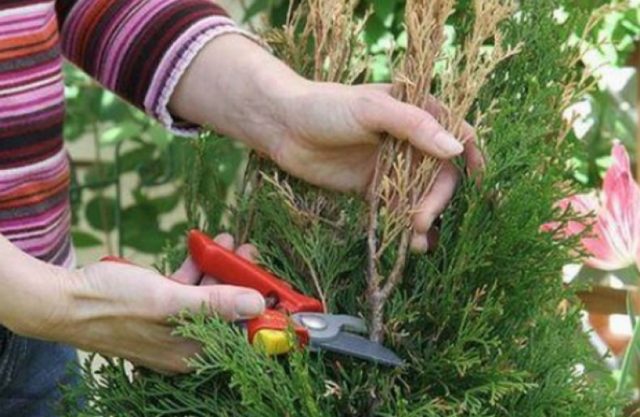

We also use personal protective equipment - overalls and gloves. The resin of the plant is very sticky and not easy to get rid of. In addition, it may contain toxins, which, once in the wound, cause irritation. Only ordinary juniper is not poisonous, so the formation of this plant is completely safe. The most poisonous is the Cossack, you need to be careful with it, there are a lot of toxins in the poison, they can cause irritation even when they usually get on the skin.
When cutting Cossack juniper, you need to wear gloves and overalls. It is also recommended to wear a mask to protect the airways. If Cossack juniper juice does get on your skin, wash it off with cold water, you can use laundry soap. A burn may form on the affected area, it will pass quickly. But try to avoid getting poison on the mucous membranes, it is very dangerous.
After the end of the procedure, you need to wash the tools and get rid of the adhesive resin. The following will help us:
- alcohol;
- detergent;
- organic solvent.
After washing the instrument, it must be dried. If reuse is required, you will have to disinfect again.
Features of cutting juniper plantings
What you need to know about the juniper pruning scheme:
- shorten the branches for one haircut no more than 1/3 of the growth.Due to the low growth rate, conifers need a long period of time to recover;
- to make the crown thicker, autumn pruning is recommended 1/3 of the growth of the current year. It is easy to distinguish young needles by their external characteristics, they stand out with a light shade, a relatively delicate structure and flexibility;
- the branch with bald spots is removed from the trunk radically - by a ring - or quite a bit, leaving a segment with needle-like greenery. Unlike deciduous trees, there are no dormant buds on the branches of the ephedra, so you should not count on regeneration;
- In order not to compromise the aesthetics of an evergreen pet, it is important to make the cuts invisible. For example, you should cut a twig from the nearest fork. If you remove only its tip, harmony is disturbed, since the cross sections are striking.
- in case the branch is knocked out of the crown and sagged under its own weight, before taking radical steps, it is worth trying to shift the center of gravity in the right direction. To do this, cut off the shoots so that as a result, the position of the branch changes.
Whole twigs about 10 cm long to be removed can be used as a planting specimen. They are torn off in early spring along with a "heel" - a piece of wood - to grow a new bush, and such cuttings take root well. Small waste from clipping is used to mulch the soil.
Features and stages of work:
- for pruning, a sharp garden tool is used, which must be disinfected before work;
- it is important to make even cuts at an angle of 45 °;
- before starting the manipulations, the juniper bush is moistened by sprinkling;
- before and after cutting, the bush is fed with complex fertilizers. During the rehabilitation period, growth stimulants are also introduced, and a sufficient level of moisture is provided with the help of irrigation and sprinkling.
It is important to work with gloves and protective clothing, given that most of the culture is poisonous and the resin is difficult to wash off.
The use of Cossack juniper in folk medicine
The healing properties of juniper were actively used by ancient Greek doctors. The berries of this plant were considered the best antidote for snake bites and a host of other diseases there. The herb of the plant was also used - as a diuretic, as well as for fumigating the rooms where the infectious patient lay. There are many varieties of juniper, and there are those that are both healing and very dangerous to health. For example, Cossack juniper is a poisonous shrub, but its use, properties, composition should be considered in more detail because of its ability to heal external diseases.
Shaping haircut
The ability to grow in different directions and the growth rate of coniferous species depend on the varietal affiliation. There are varieties that grow slowly, therefore, with the help of formative (topiary) pruning in a personal plot, you can get a decorative figured element that does not require constant shape adjustments.
As a result of the procedure, if the skeleton of the branches allows, the juniper grows in the form of a tree, a creeping bush, a ball on a leg. In the latter case, you can use the grafting of a ball-shaped hybrid on the stem of the stock, then the shearing allows you to keep the shape in perfect condition. The culture is suitable for creating hedges.
When carrying out topiary pruning, it is necessary to take into account the natural structure of the skeletal branches of the juniper. It will not be possible to make an elegant spiral from a bush creeping on the ground, and a pillow-shaped crown from a tall tree. Beginners are advised to use templates when trimming juniper to get a ball, circle or pyramid. Later you can try to make an arch, bersot, spiral. The greatest difficulty is the creation of figures of people and animals from juniper.
On a note! When removing bare branches, they should be cut closer to the trunk. There are no growth buds, so later the hemp will simply dry out.
Treatment of the cut with fungicides is required only if the trunk is removed with a thickness of 1-2 cm. After the disinfectant mixture, it is advisable to cover it with garden varnish or oil paint. Most varieties do not require precautions, but varieties prone to various diseases are recommended to be protected.
For Cossack juniper, pruning for crown formation can be omitted, it is enough to remove dry, damaged branches. The species is poisonous, protection of hands from accidental wounds and cuts is required. Form varieties with a creeping crown at will. For a tall juniper, a cardinal pruning is permissible when it is required to completely change the plant.
The rocky coniferous species does not need the procedure at all. And when performing an operation for a horizontal variety, you should act carefully, try not to damage the main branches and trunks. Otherwise, in addition to the loss of decorativeness, harm to the shrub is possible.
Crown formation is permissible in spring and autumn. The air temperature must be at least 4 ° C. The beginning of the growing season is considered more preferable, since diseased, dry, frozen branches are additionally removed. Together with the beginning of active growth, the bush quickly recovers, the crown becomes lush and thick. With the same measures in the fall, the plant will remain bare until spring.
Pruning tips
The procedure will benefit the representative of the coniferous species, subject to the basic agrotechnical recommendations:
- The tool must be disinfected, sharpened to avoid the formation of torn edges. A smooth cut is quickly tightened, helping to avoid infection.
- It is best to carry out the operation in the spring before the start of the active growing season. In case of diseases or severe damage by pests, it is possible to remove individual branches of the juniper in the summer. Some gardeners prune in the fall so as not to overload the bush with damaged legs in winter.
- Crown formation is permissible only for healthy specimens.
- Shoots must not be cut to a leafless area. Remove such branches completely or leave some of the needles, since the culture does not have dormant buds.
- The adaptation period after planting must end, so pruning is only permissible for specimens planted at least a year ago.
- When choosing a shape, focus on the natural skeleton of the branches.
- In one procedure, it is permissible to remove no more than 1/3 of the aboveground part.
- Before and after the operation, it is advisable to feed the shrub with complex fertilizer.
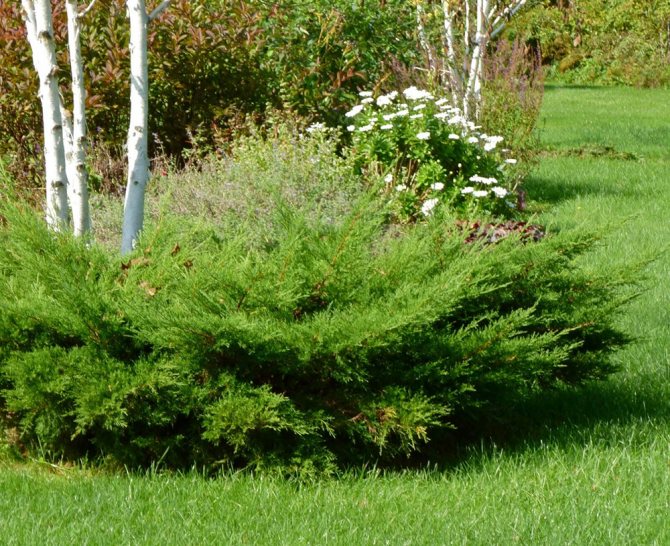

Crown formation is permissible only for healthy specimens.
Pruning is required for all types of juniper, but some are quite sanitary, others are recommended to carry out crown formation. The procedure is able to return the decorative effect to the overgrown bush, to activate the growth of new shoots. When the basic recommendations are followed, the plant quickly recovers and builds up green mass.
How to transplant Cossack juniper to another place?
The culture is sensitive to changes in habitat, so you should not replant junipers without special need. If the procedure is necessary, then you need to adhere to the following rules:
- Six months before the proposed transplant, the bush is dug around, slightly cutting the roots. During this period, the plant will have time to form a more compact root system.
- The correct timing when to transplant Cossack juniper. It is better to do this in the middle of spring so that the bush has time to take root in a new place before the cold weather.
- The planting pit is prepared according to the same rules given above for the initial planting of seedlings.
- The bush is carefully dug in and placed on a burlap, preserving the earthen lump as much as possible.
- At the new place, the orientation of the branches to the cardinal points, which was at the previous place, must be retained.
- Planting depth should not differ from the previous location.
- After transplanting, the plant is watered and, if necessary, tied to pegs.
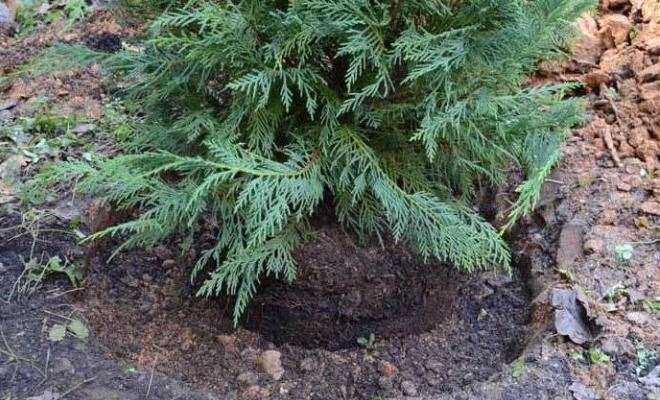

Gardening tips for cutting and shaping Cossack juniper
In order to minimize stress on the plant during pruning, it is recommended to adhere to some general recommendations that are suitable for almost all varieties of juniper:
- It is better to cut a little less than to damage the branches by cutting too deeply - this is one of the most important rules that applies not only to conifers. It is necessary to remove the shoot and sprout buds only after the shape of the bush has been carefully considered. If you cut off a large number of buds, then this can negatively affect the development of the shrub - it will slow down or completely stop its growth. Sometimes too much pruning will kill the plant.
- The bare branches of the Cossack juniper, from which the needles fell, do not have dormant buds, as is the case with most deciduous crops. They will not be covered with needles again, so such branches are cut “into a ring” - completely, under the very base, or they leave a very small stump. If this is not done, the exposed shoot will dry out over time and spoil the appearance of the juniper.
- You cannot cut off more than 1/3 of the total volume of green mass at a time. Otherwise, the shrub may weaken and will not have time to recover before the onset of winter. This is especially true for varieties with slow growth rates - they will show significant "bald spots", which will be overgrown only after a few seasons.
- Slices should be done at an angle of 45 ° C. If you cut the branches across, then the bush will heal slowly.
- To give the shrub a neater appearance after pruning, it is recommended to cut the shoots to the nearest fork, and not just the ends.
- For better healing of the branches, all sections must be disinfected. Most often, for this purpose, they are treated with garden pitch.
- The garden clipper must be well sharpened. Blunt scissors "chew" the ends of the branches, so the cuts are sloppy and fibrous. After such pruning, the shoots heal for a long time. In addition, pruning with a blunt tool increases the risk of juniper infection.
- All tools for working with shrubs must be disinfected. To do this, they can be wiped with a weak solution of potassium permanganate.
- For a greater density of the crown, the shrub is cut off according to the young growth.
- Shortly before cutting, you should feed the juniper with mineral fertilizers. The plant responds especially well to nitrogen fertilizers, which help the bush to gain green mass. After pruning, the shrub is also fed, but in moderation.
- In order to stimulate the growth of the crown, you can spray the Cossack juniper with the Epin solution.
Gallery: Cossack juniper (25 photos)
Sanitary pruning
This type of procedure is carried out for all types and varieties of juniper. It is recommended to remove branches damaged in winter in spring. The needles burned by the sun's rays can recover, so such shoots should be left, observe their condition. As a last resort, remove in the fall.
During the summer, a sanitary haircut will be needed for bushes infected with diseases or pests. In most cases, such branches are removed immediately to prevent the spread of the damaging factor throughout the plant. In autumn, inspect the juniper for broken, obsolete, dried branches, which are also cut.
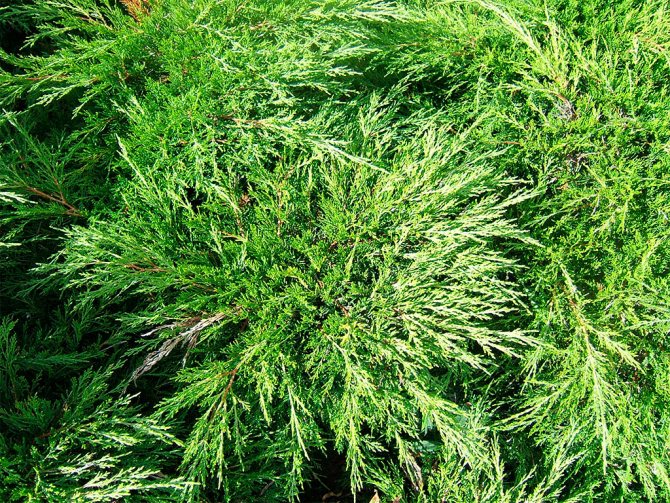

During the summer, a sanitary haircut will be needed for bushes infected with diseases or pests.
Attention is especially required for creeping species with a densely filled crown. Thickening often provokes the development of fungal diseases.If you leave dry, dead parts among the branches, an infectious focus will arise on the juniper, which can spread to the entire bush.

